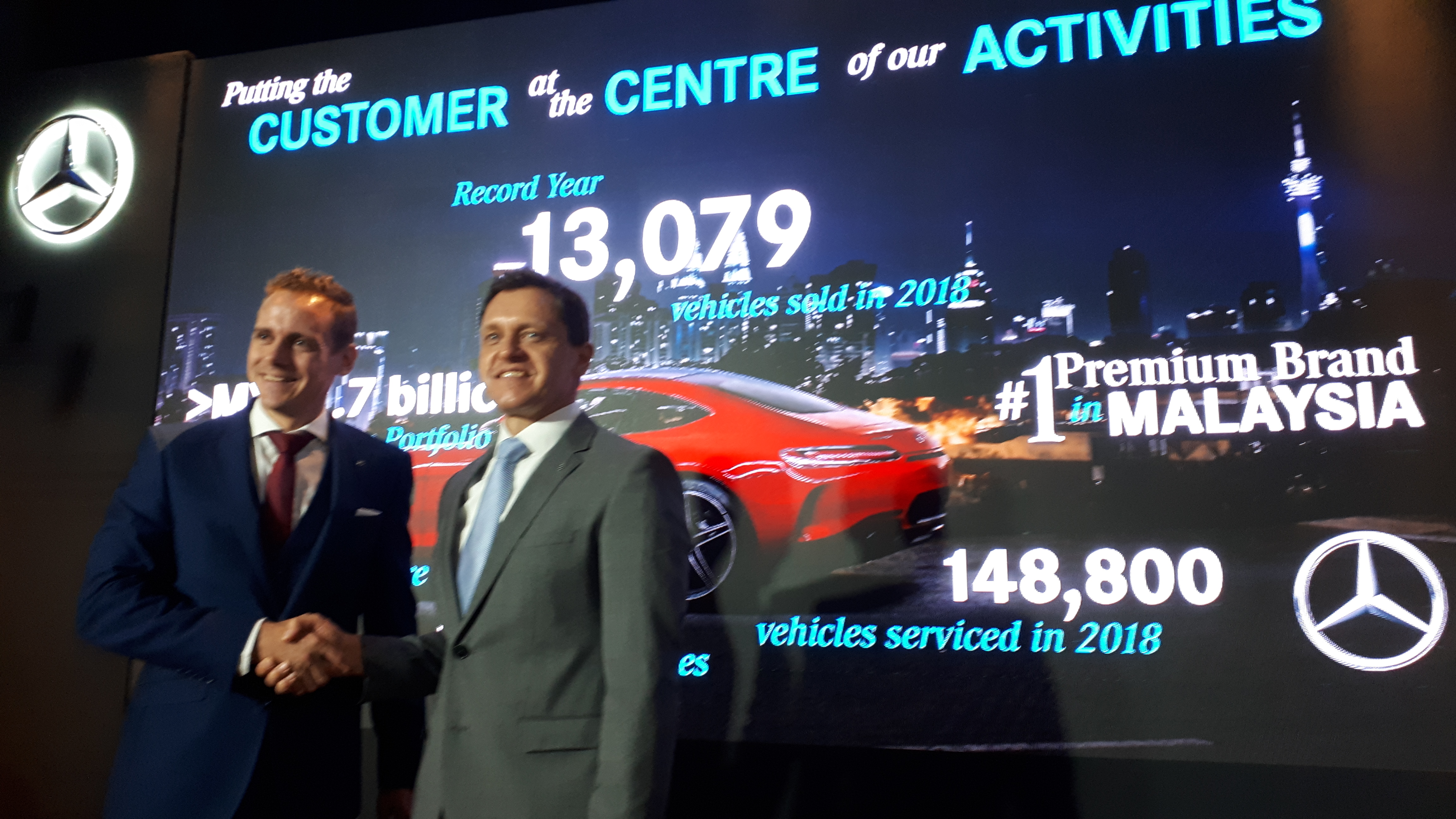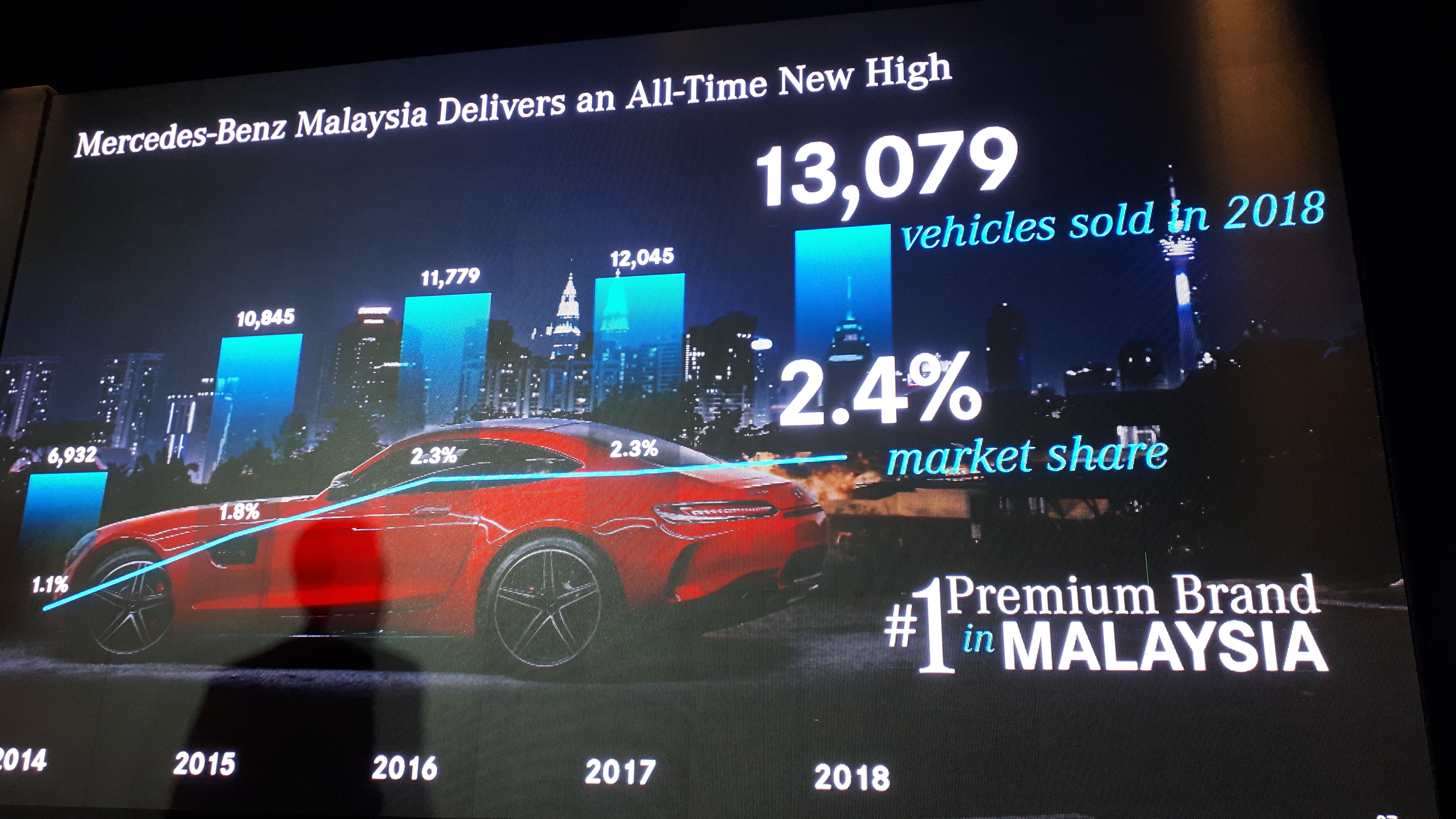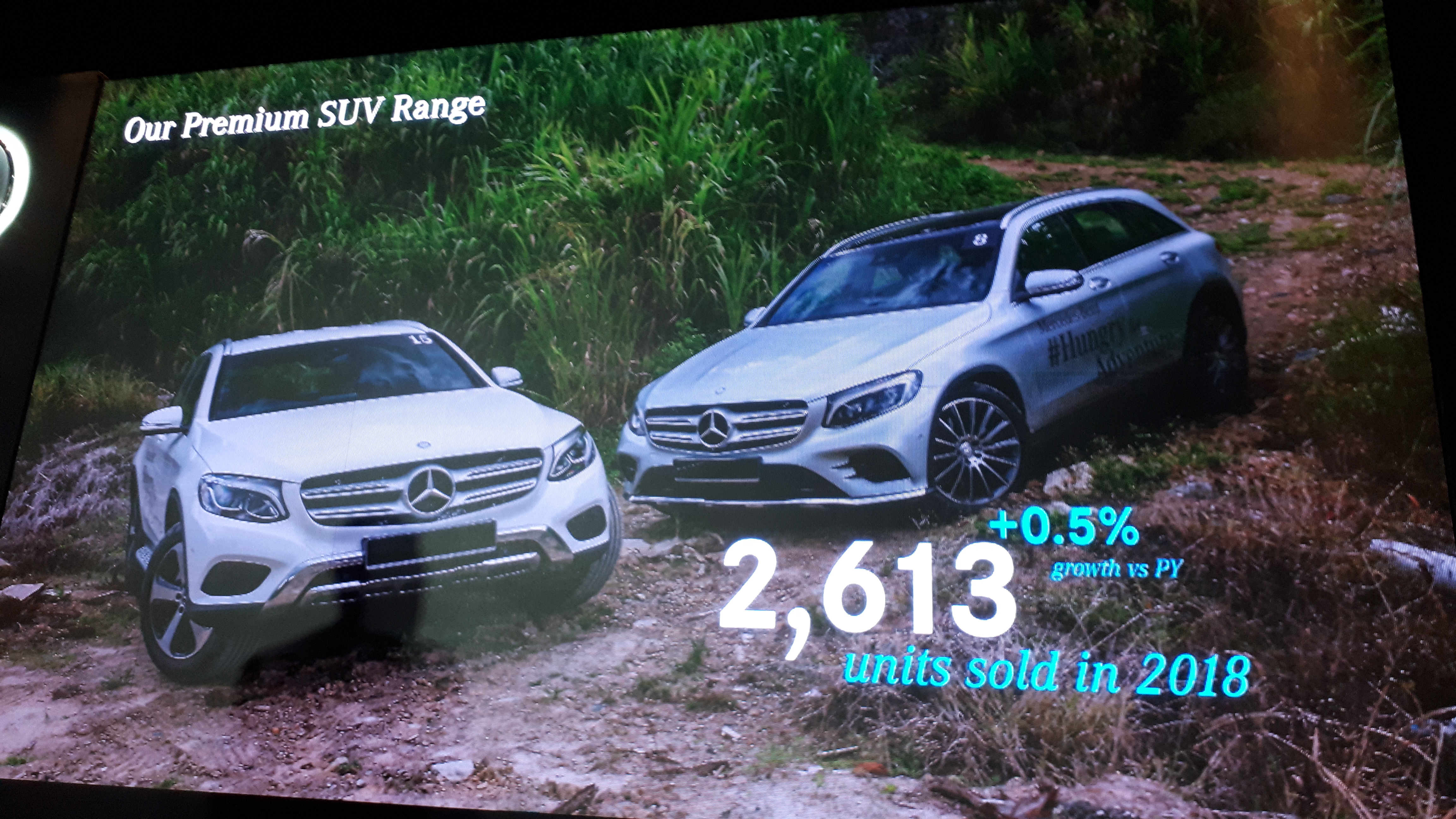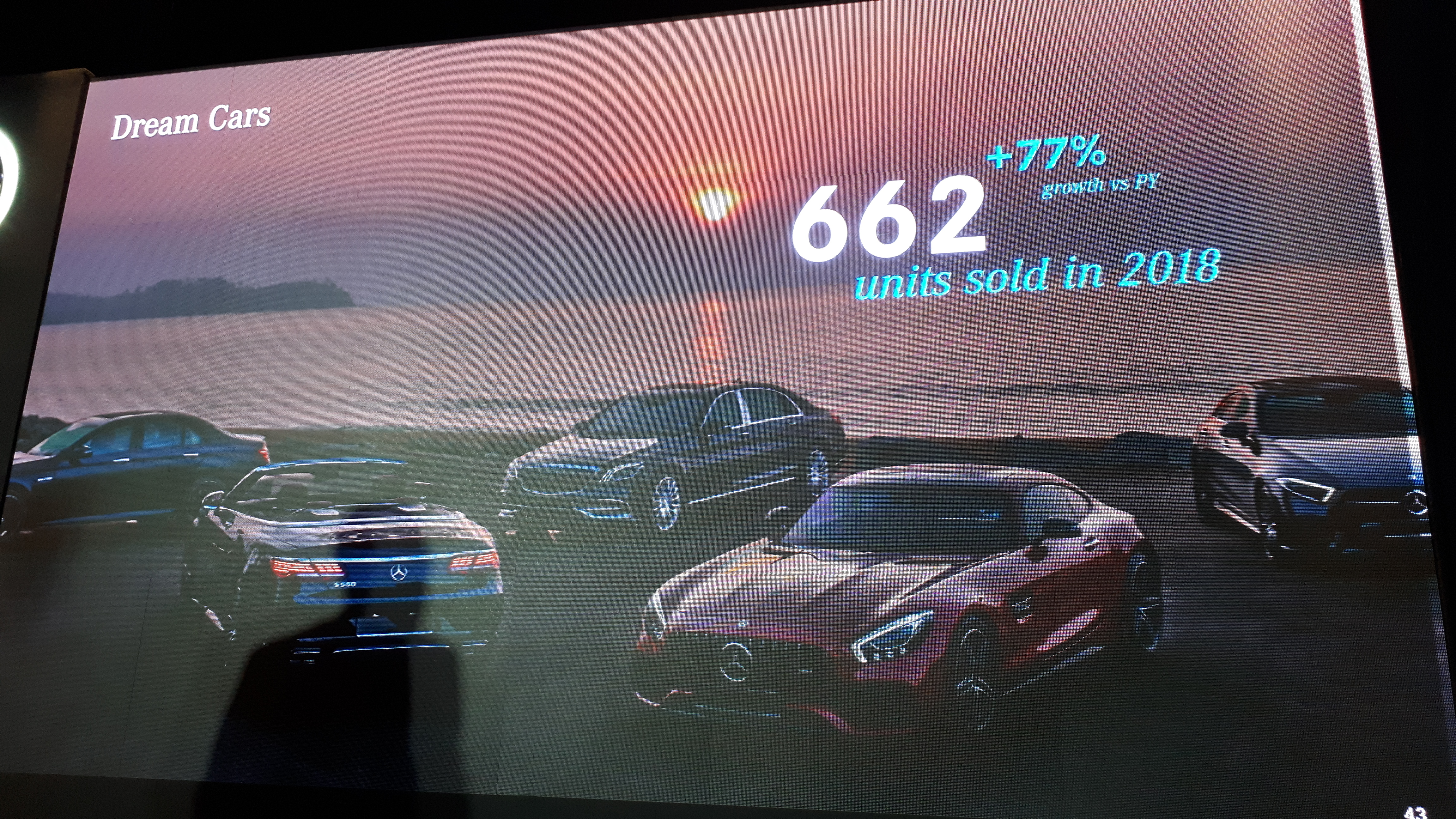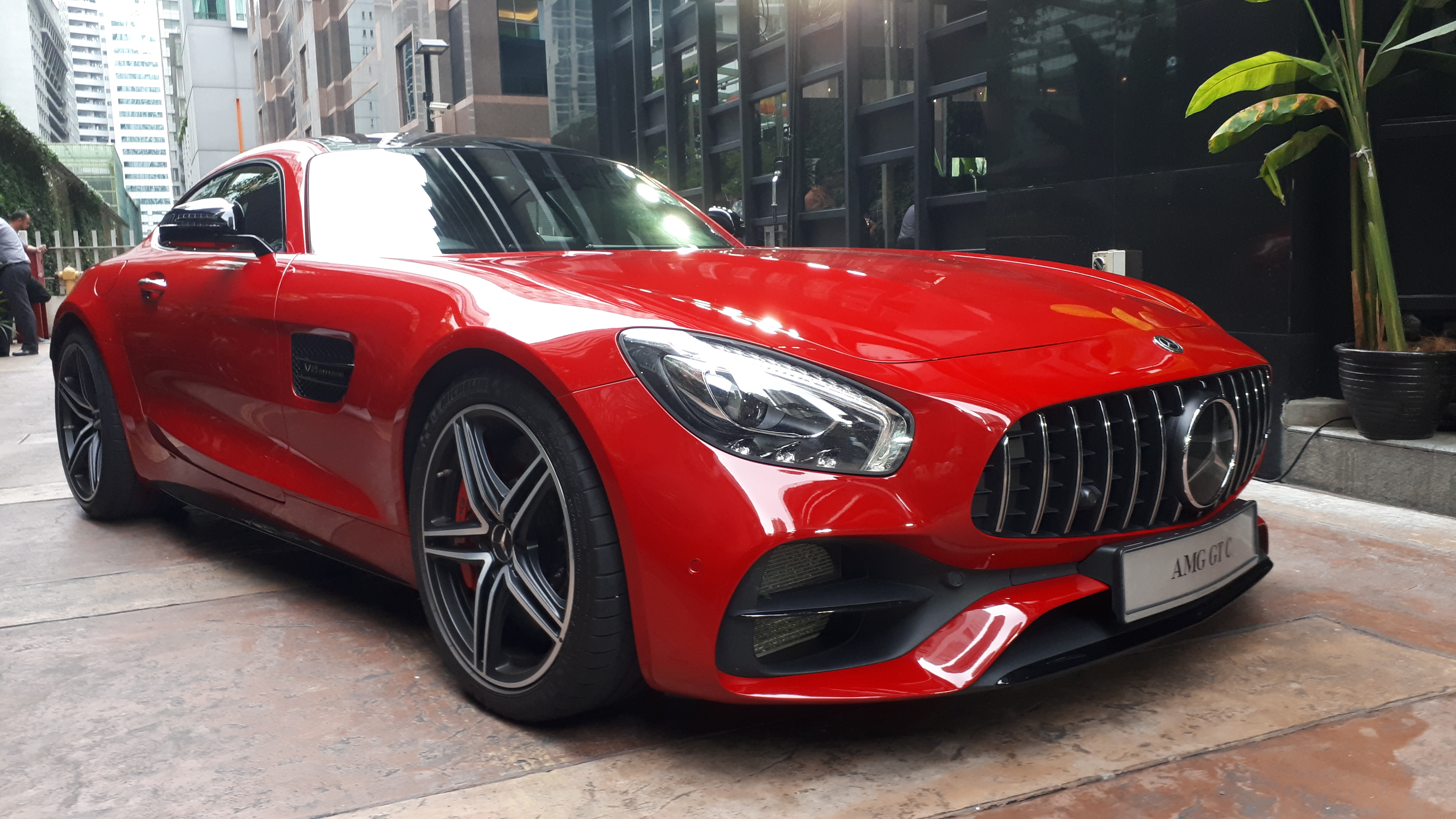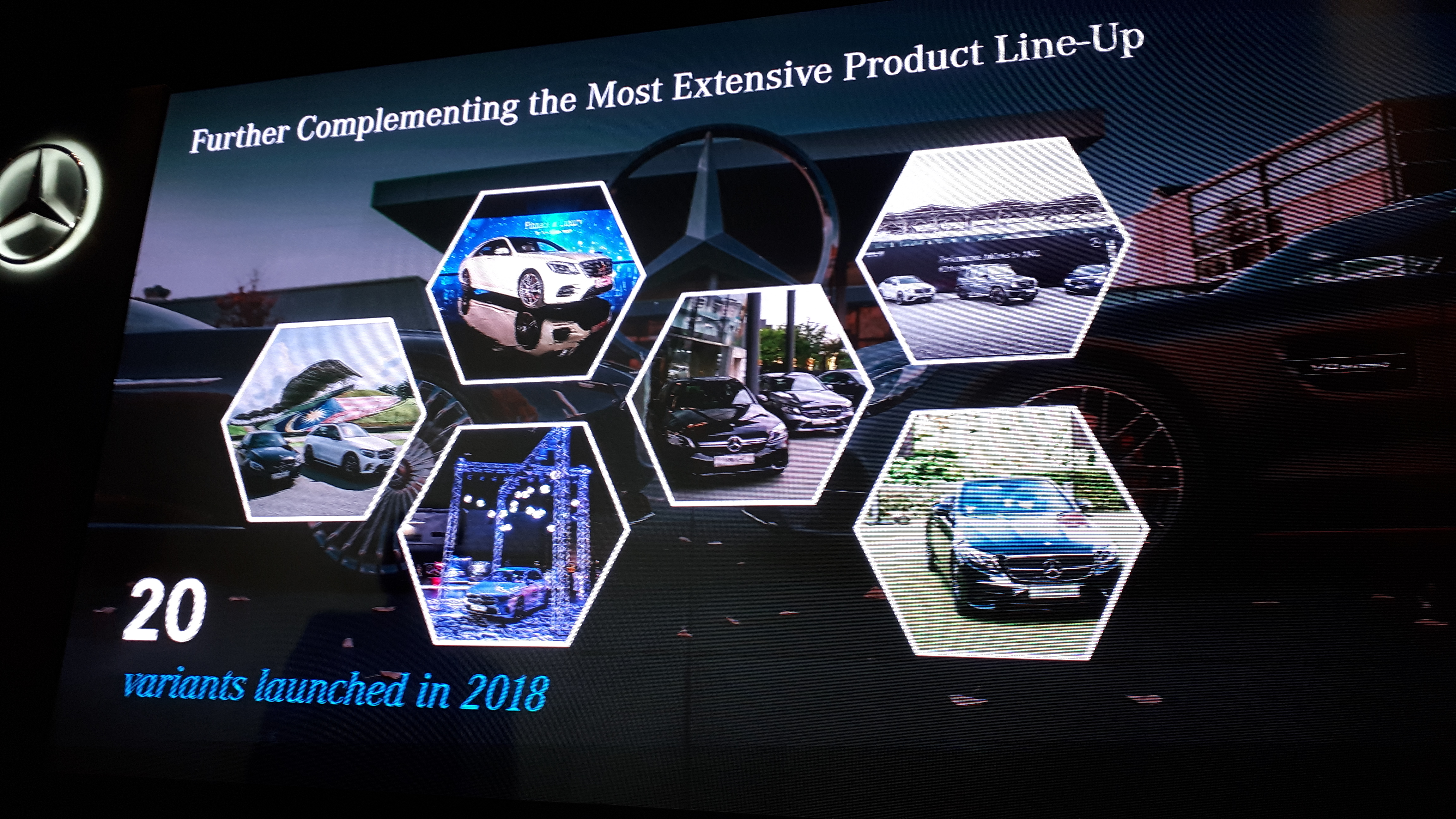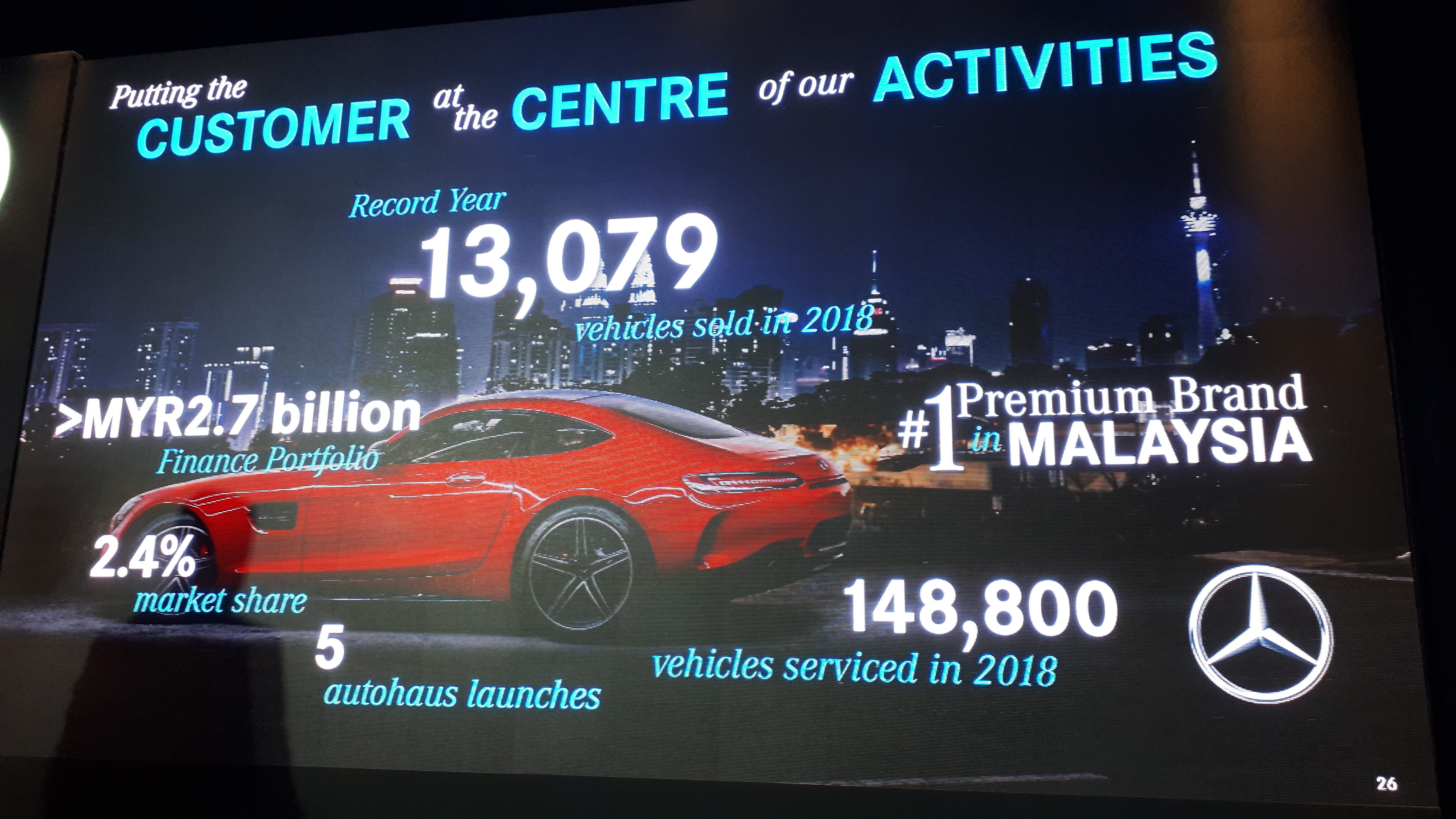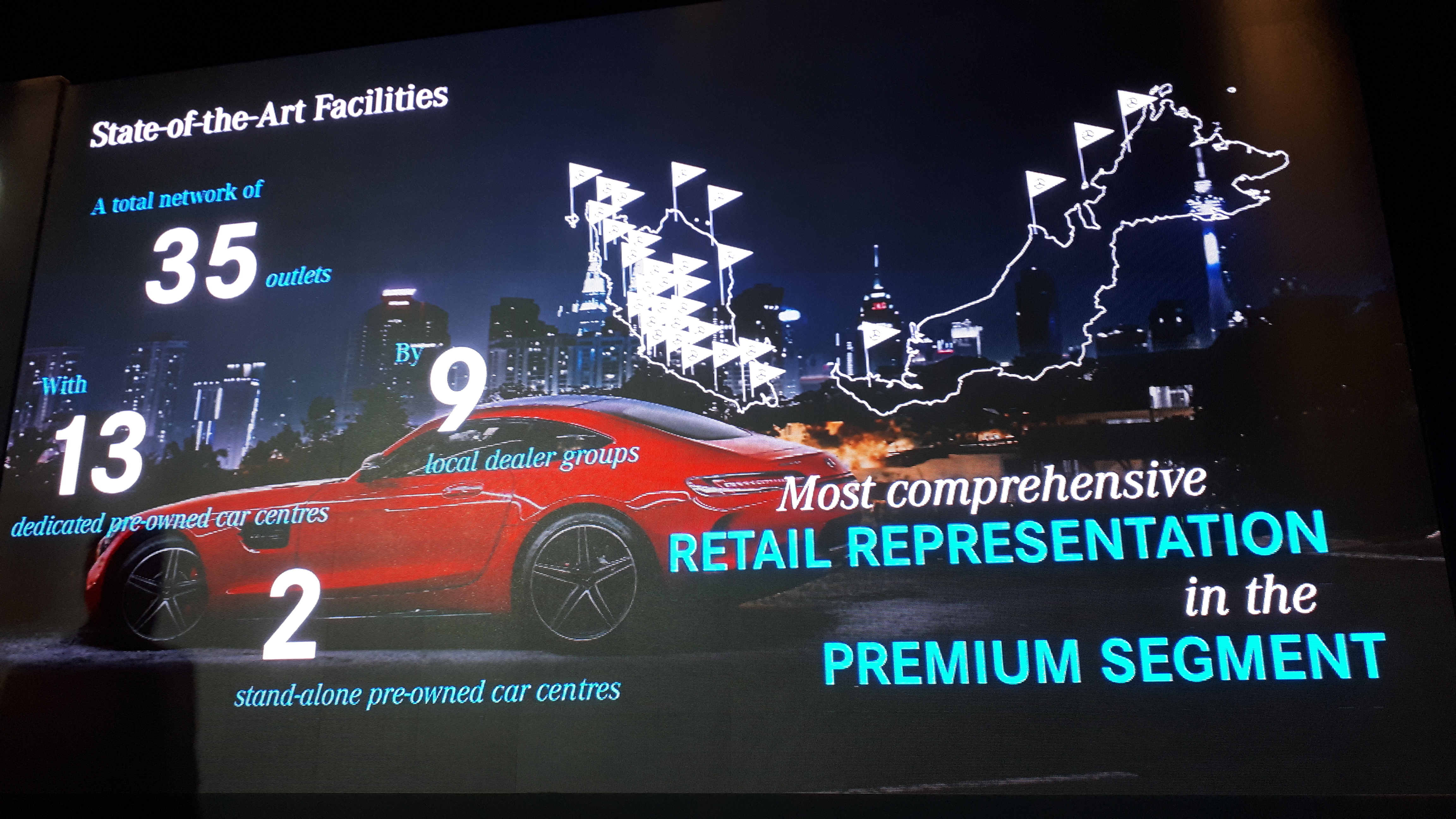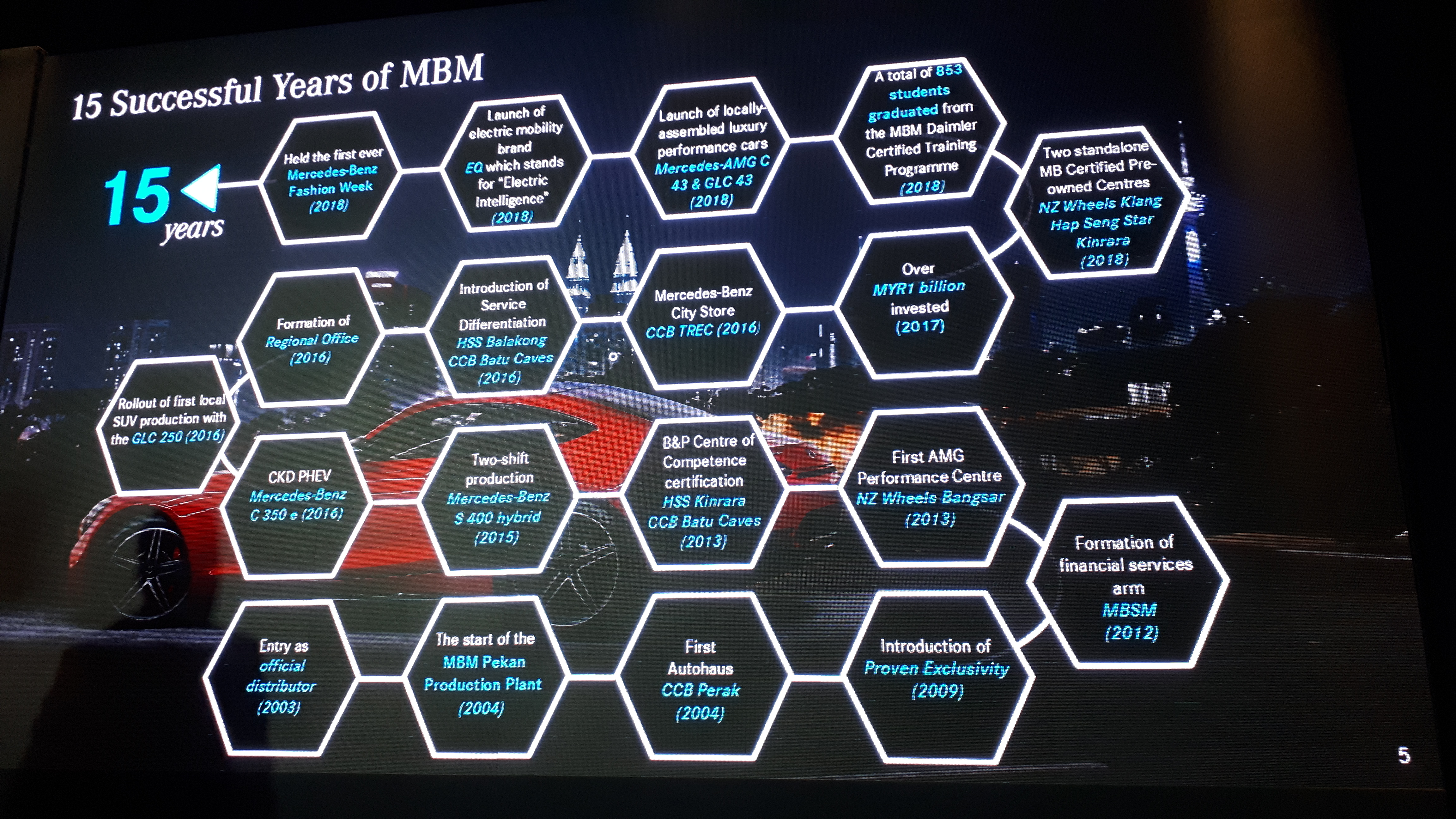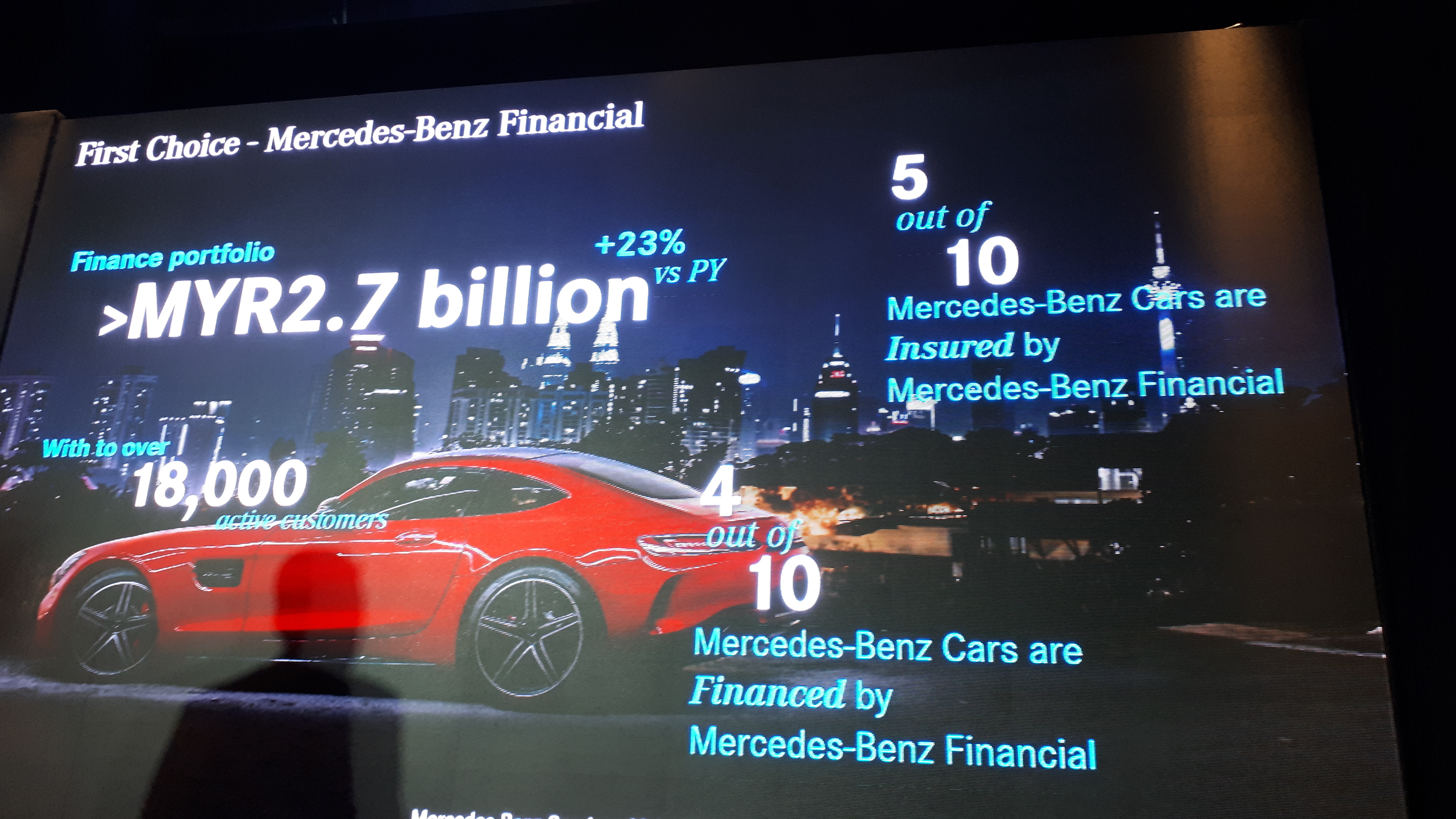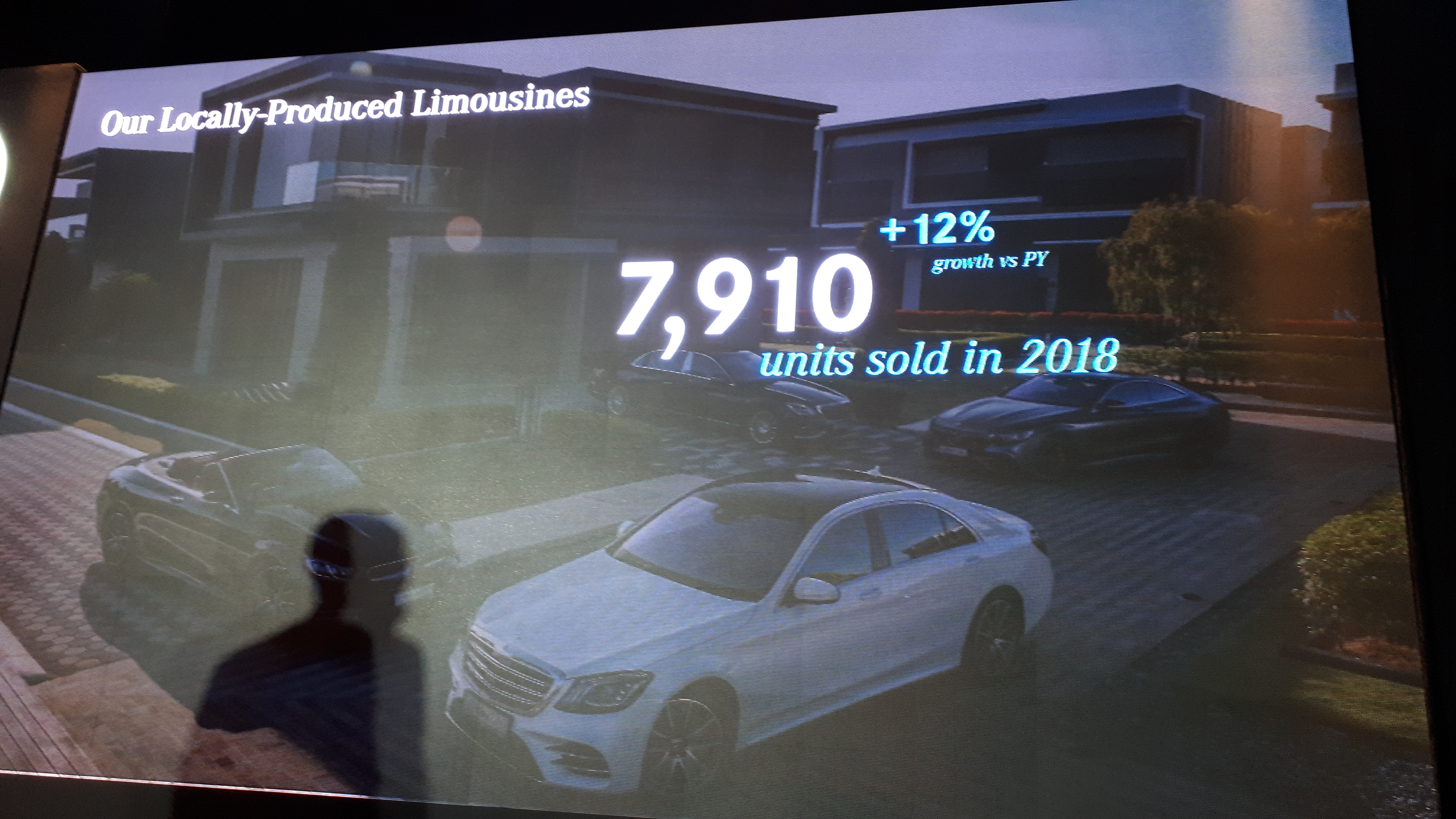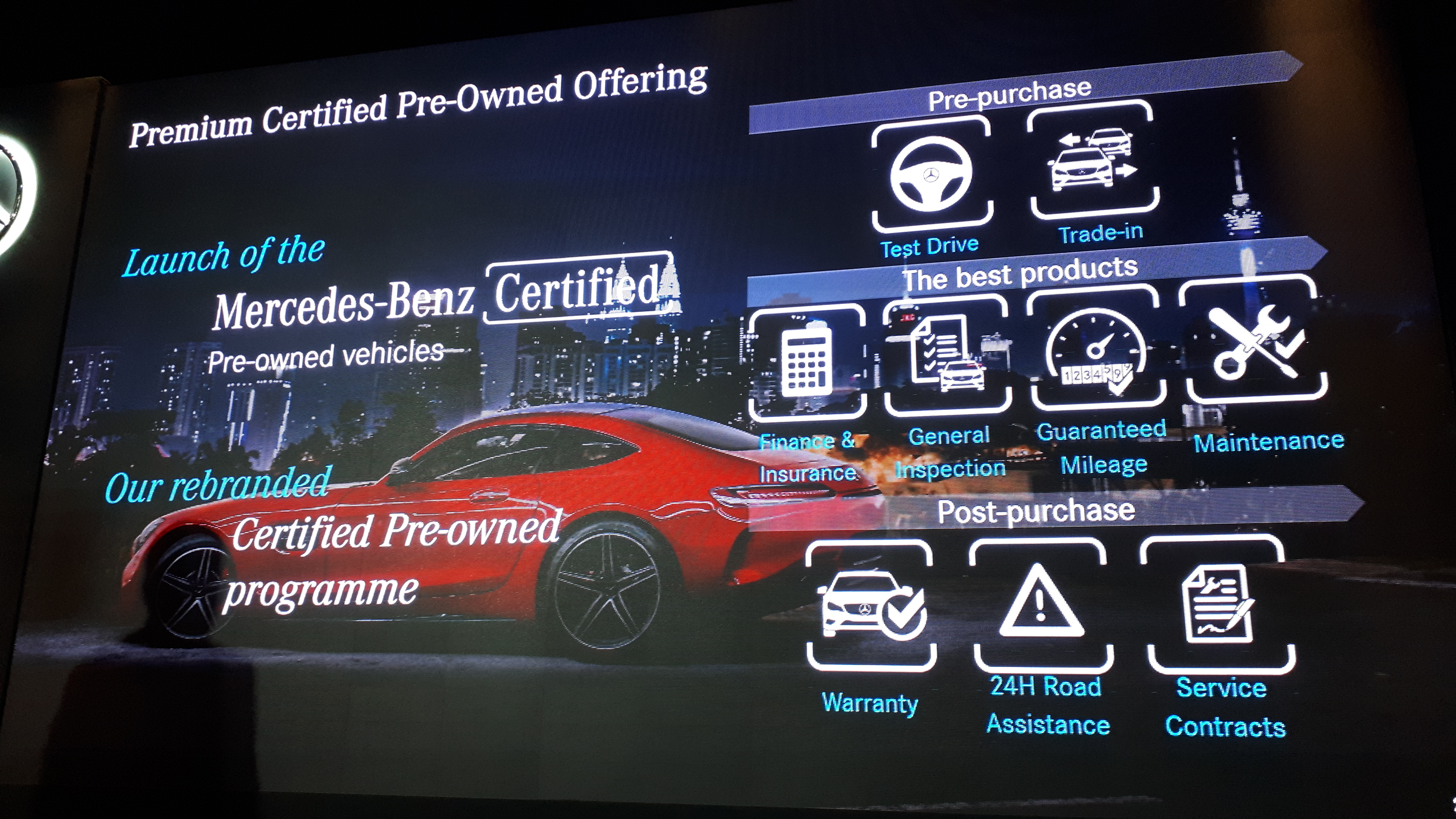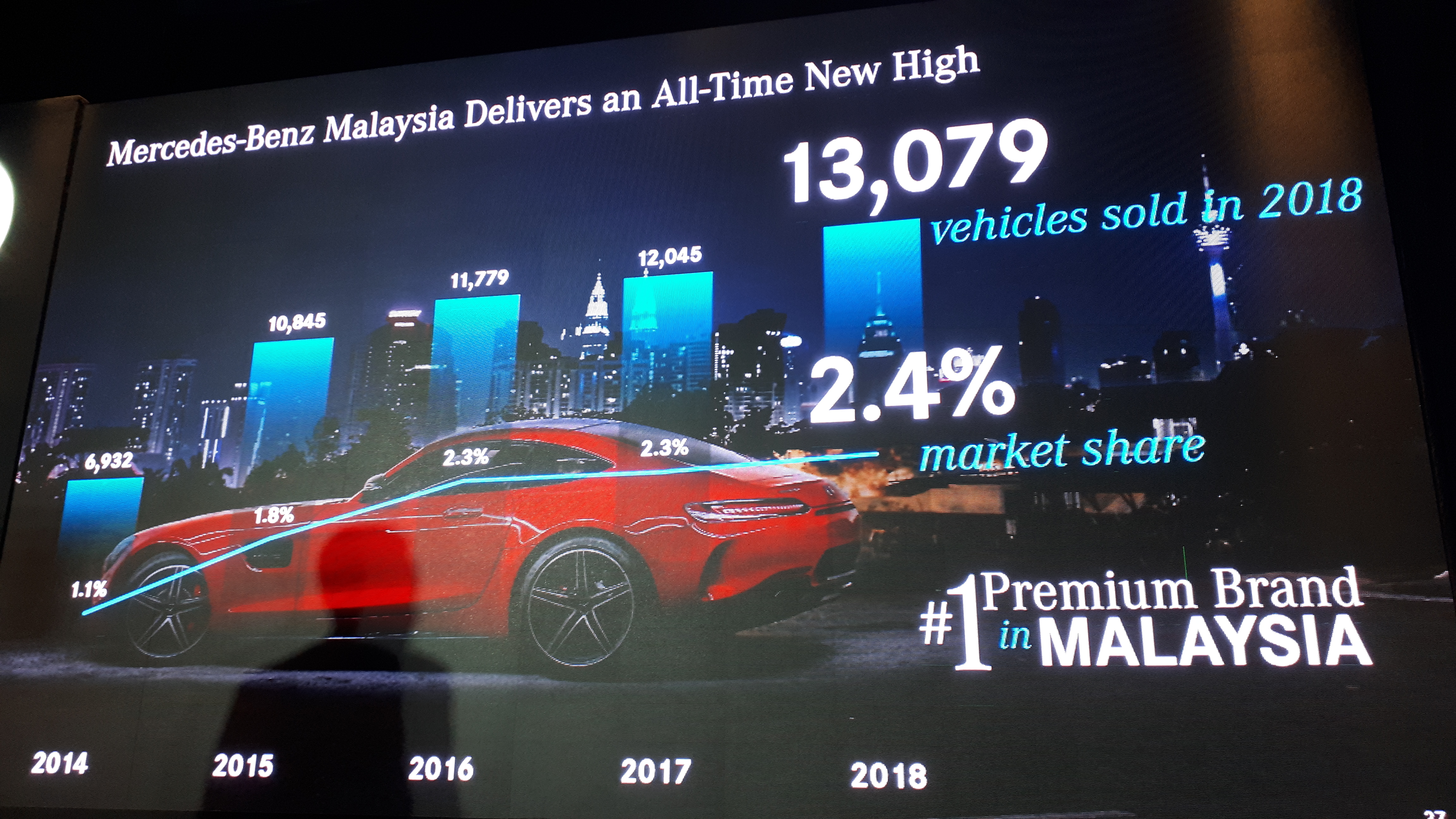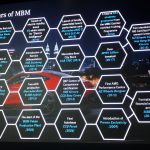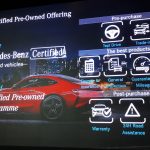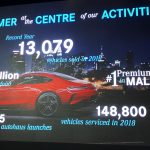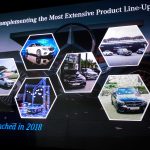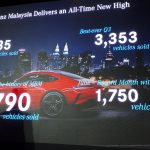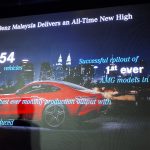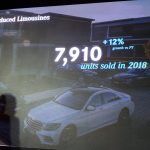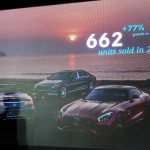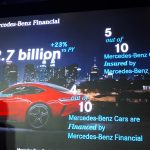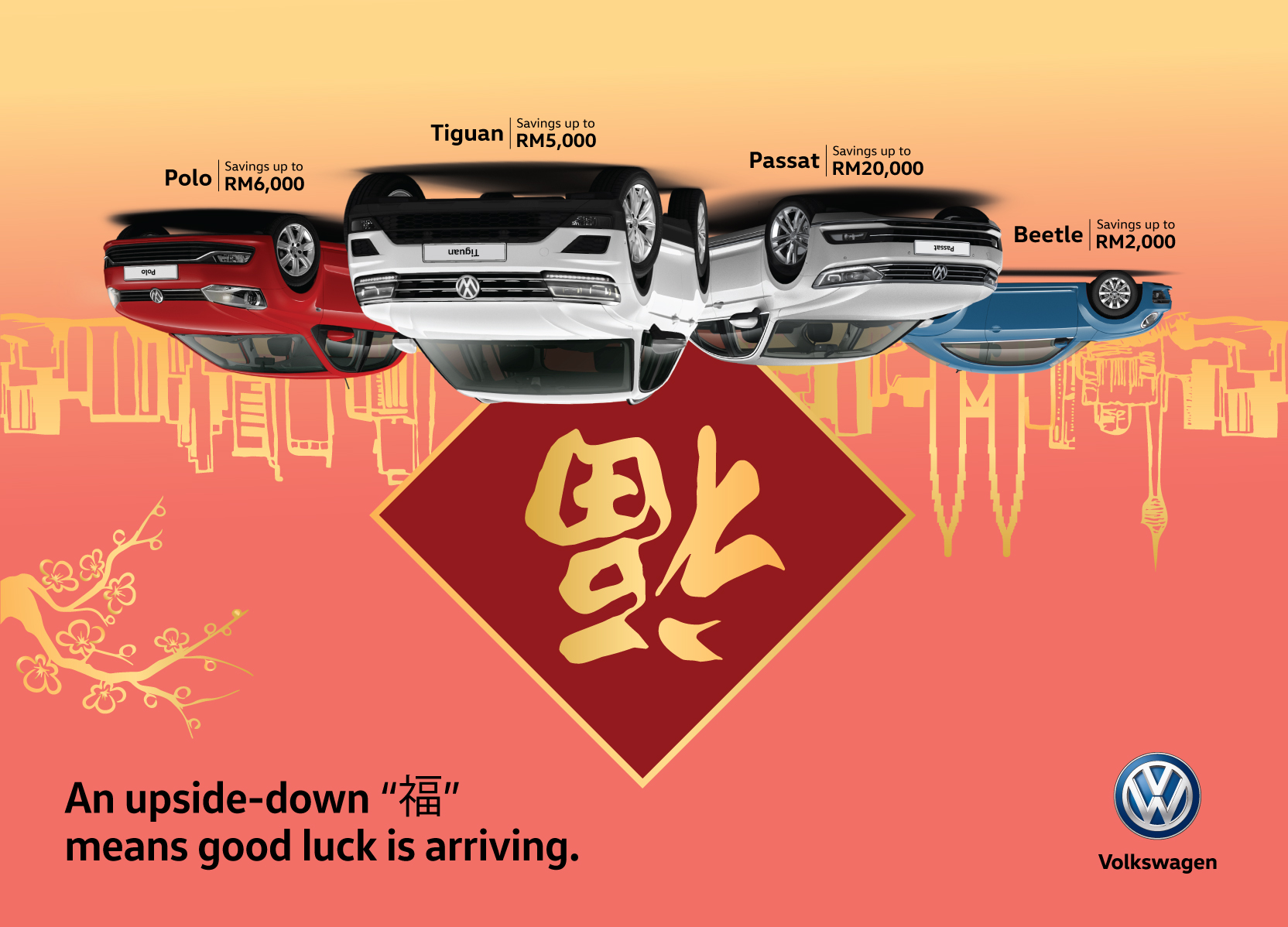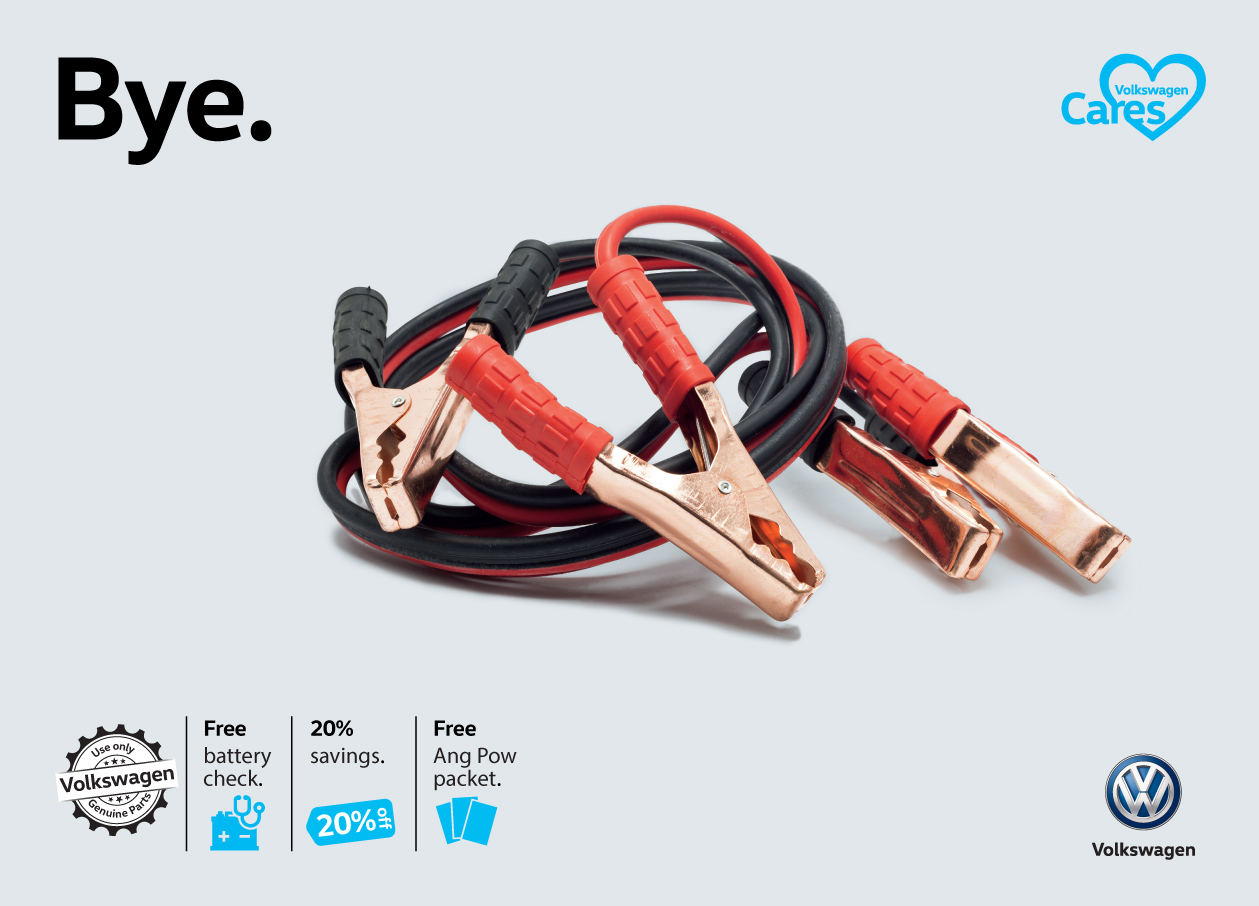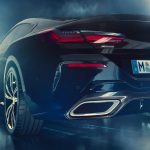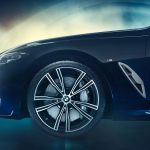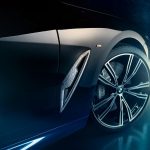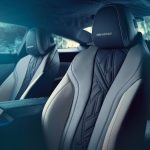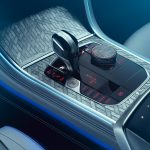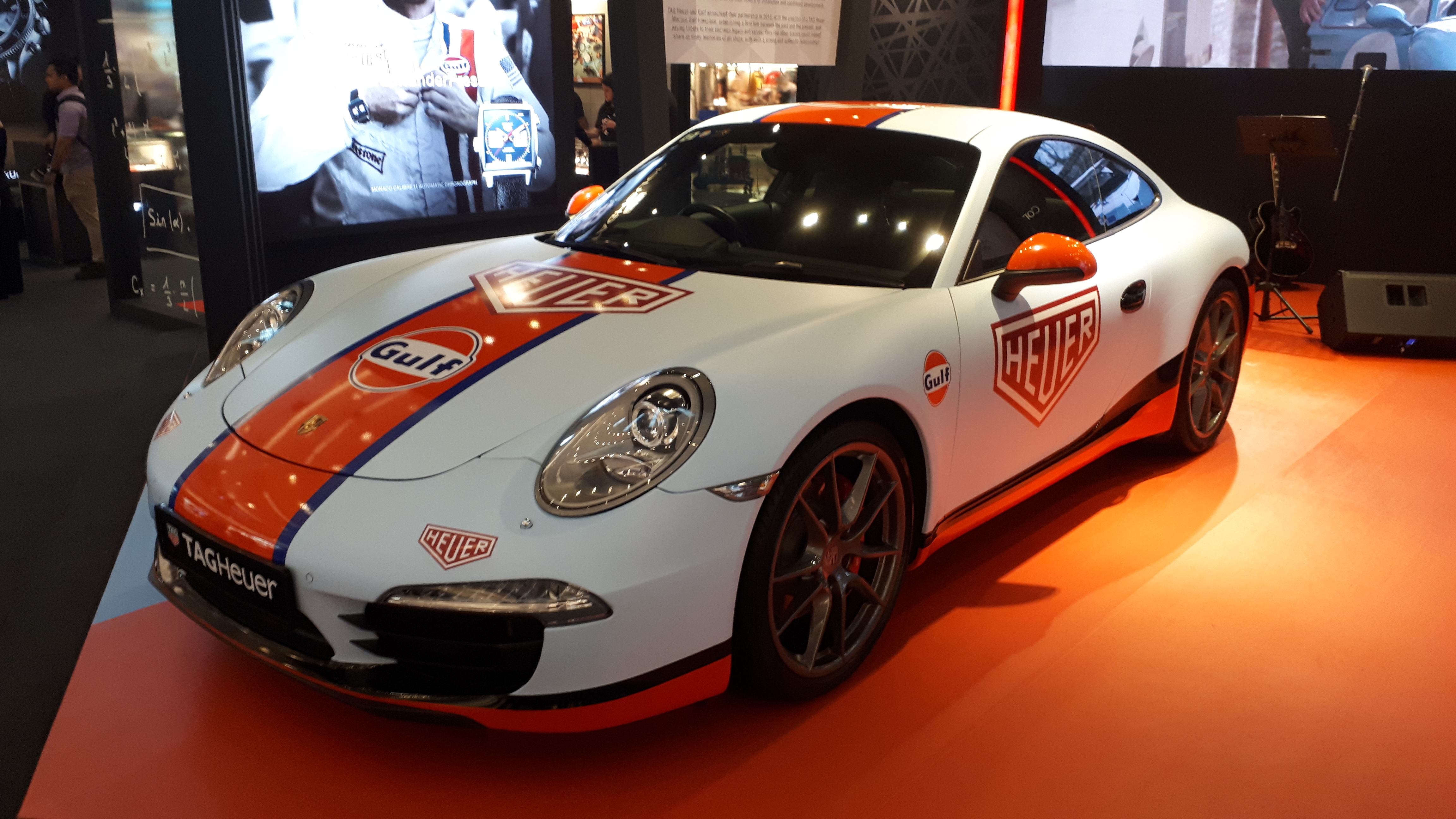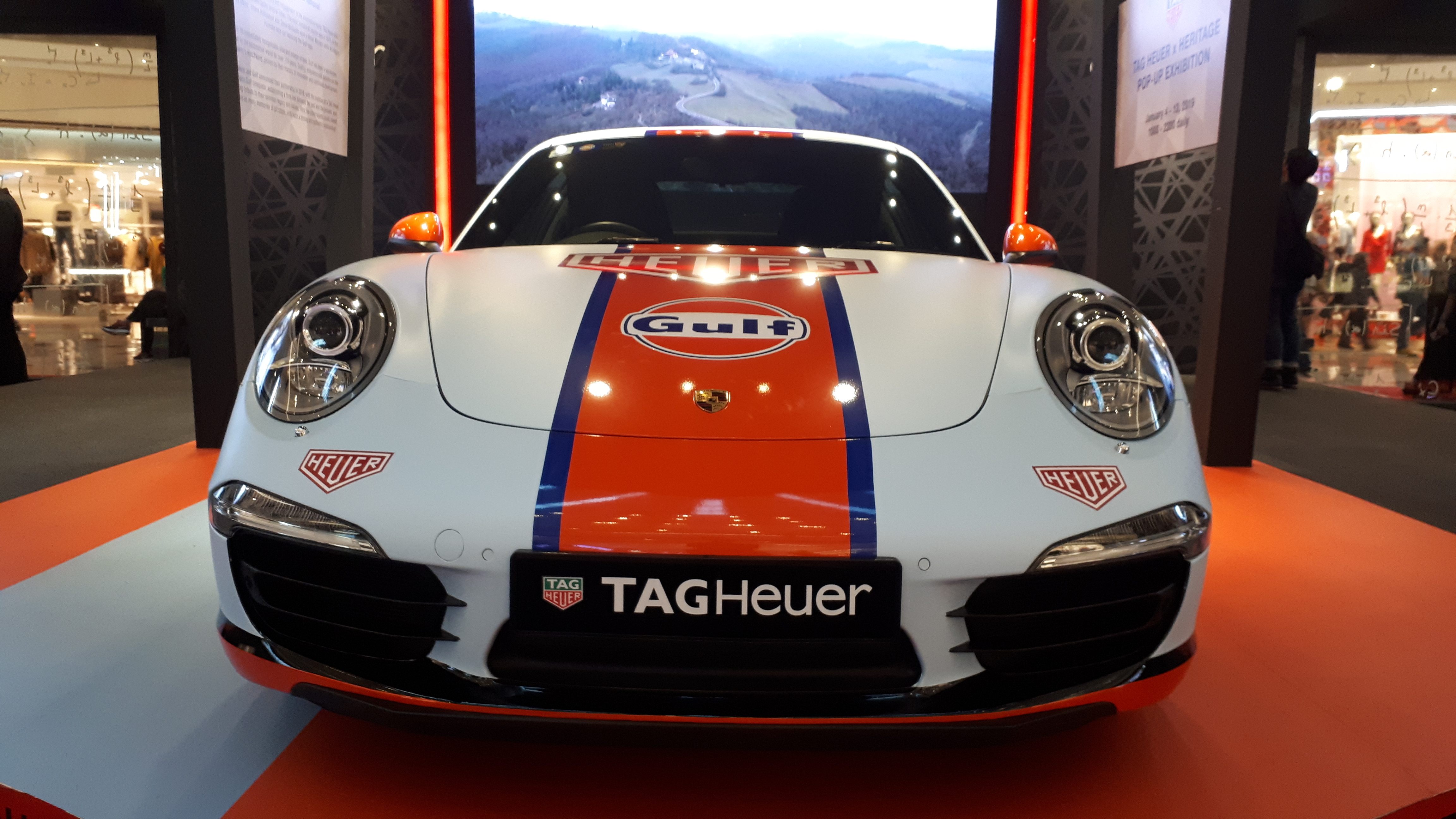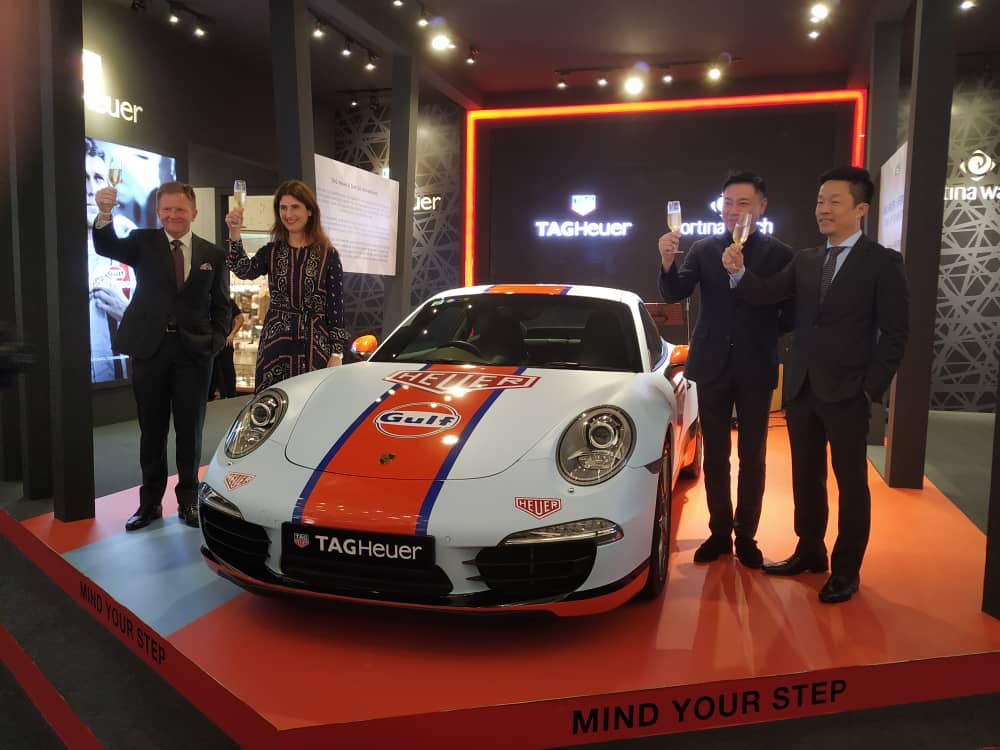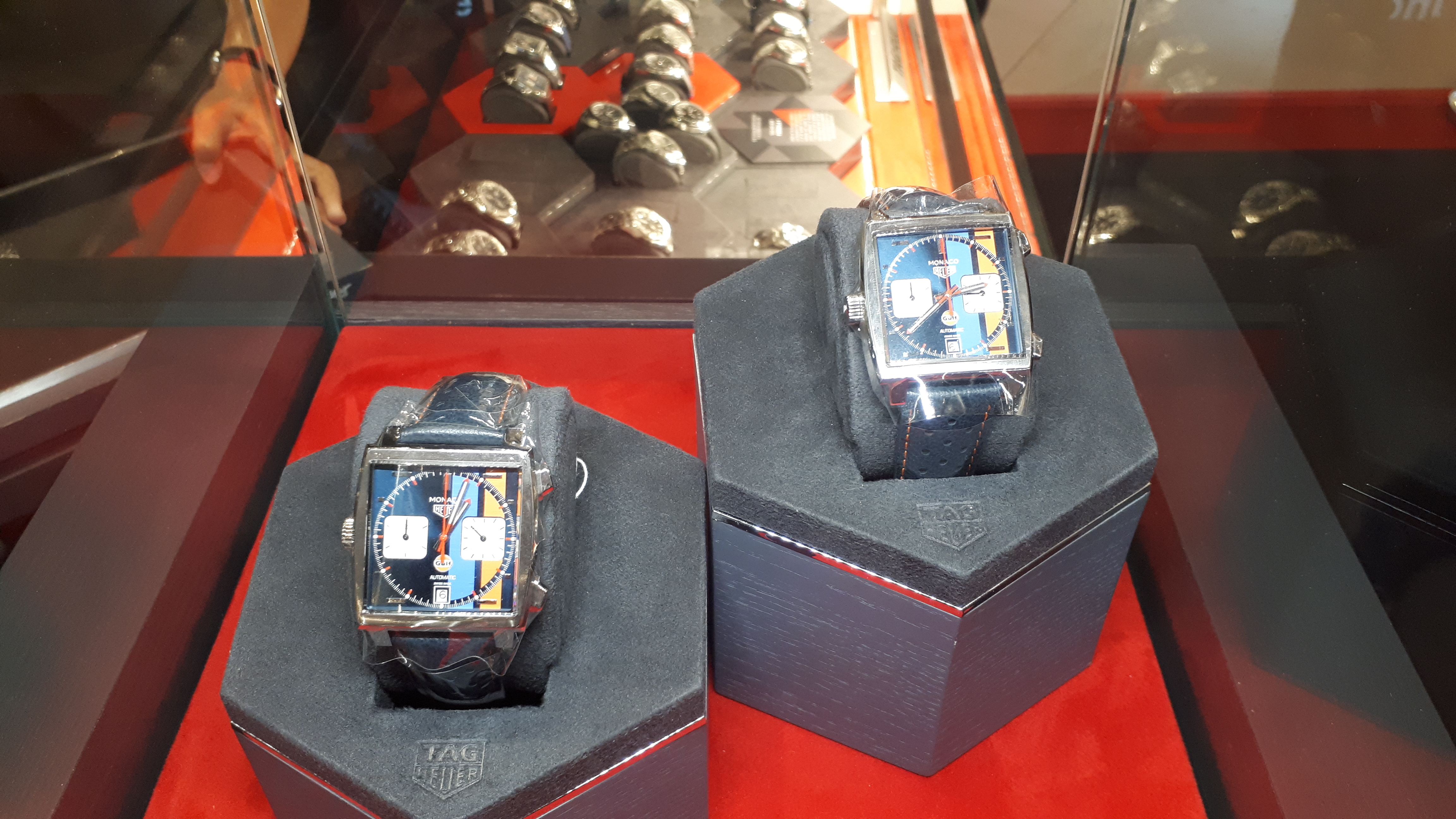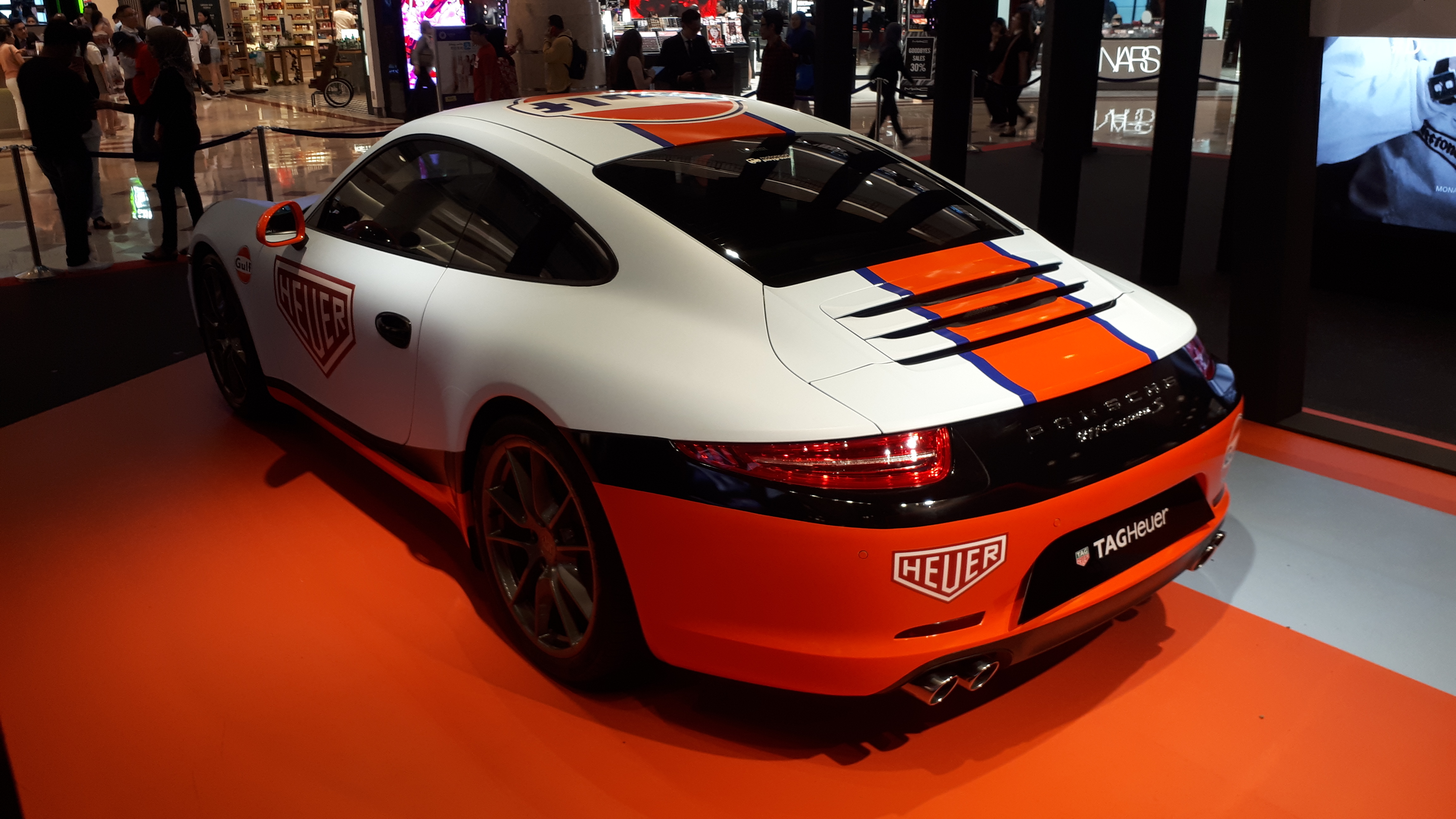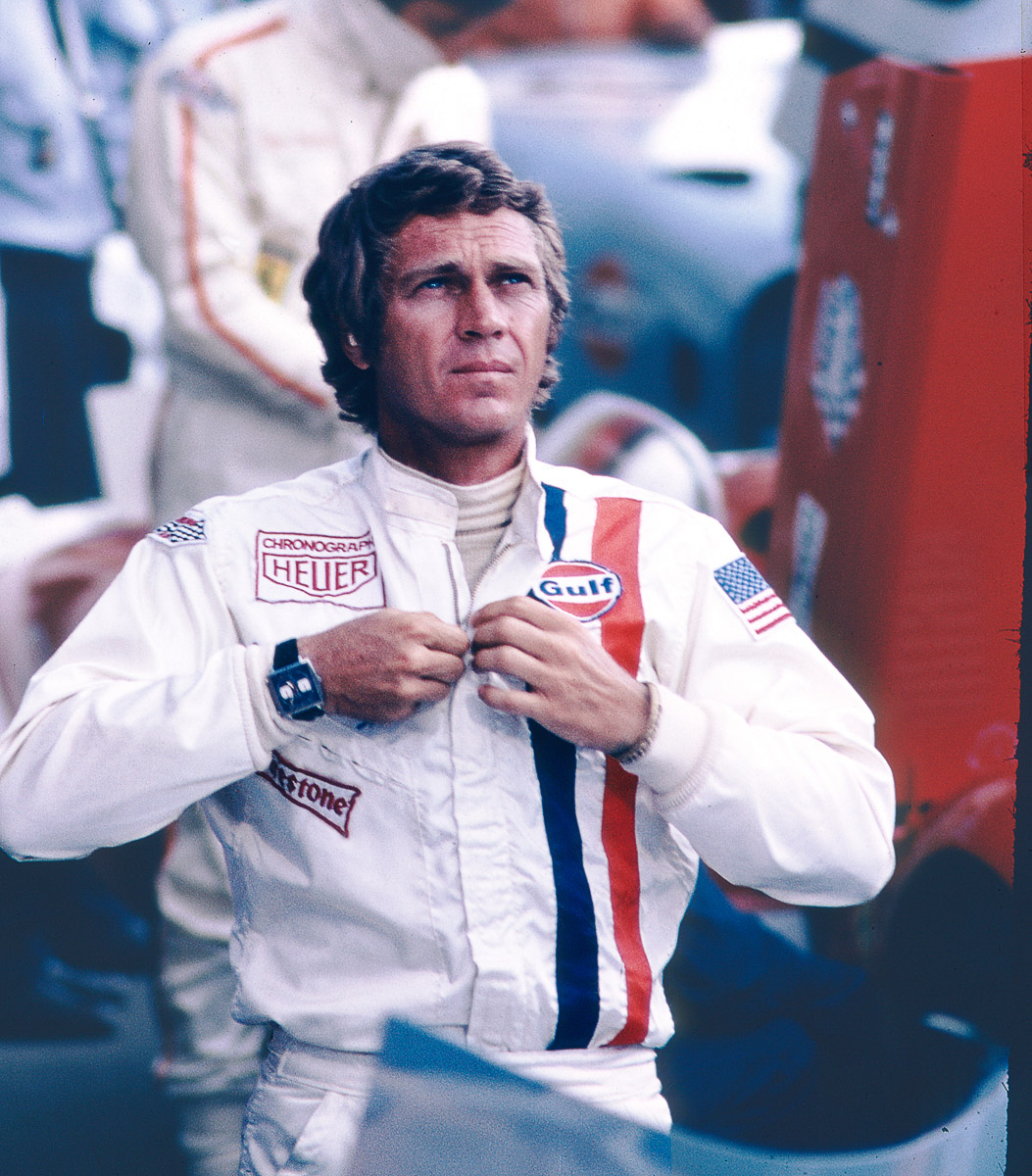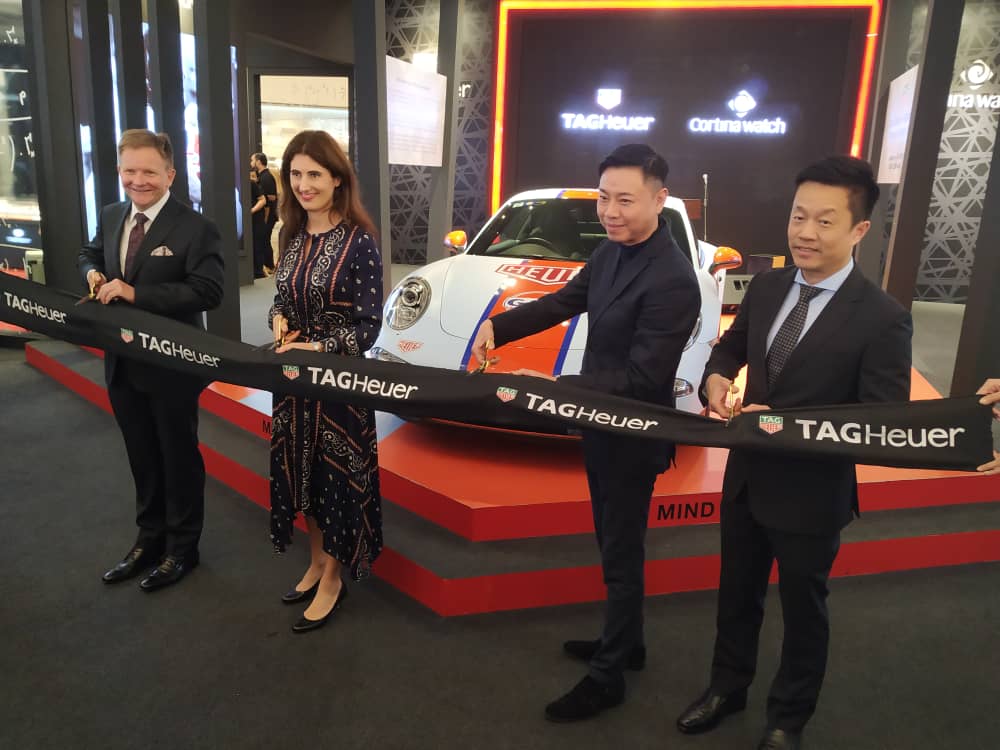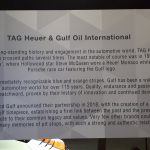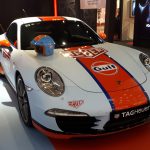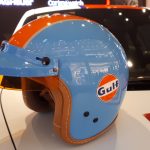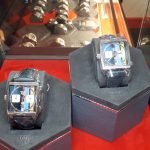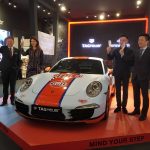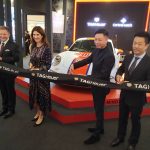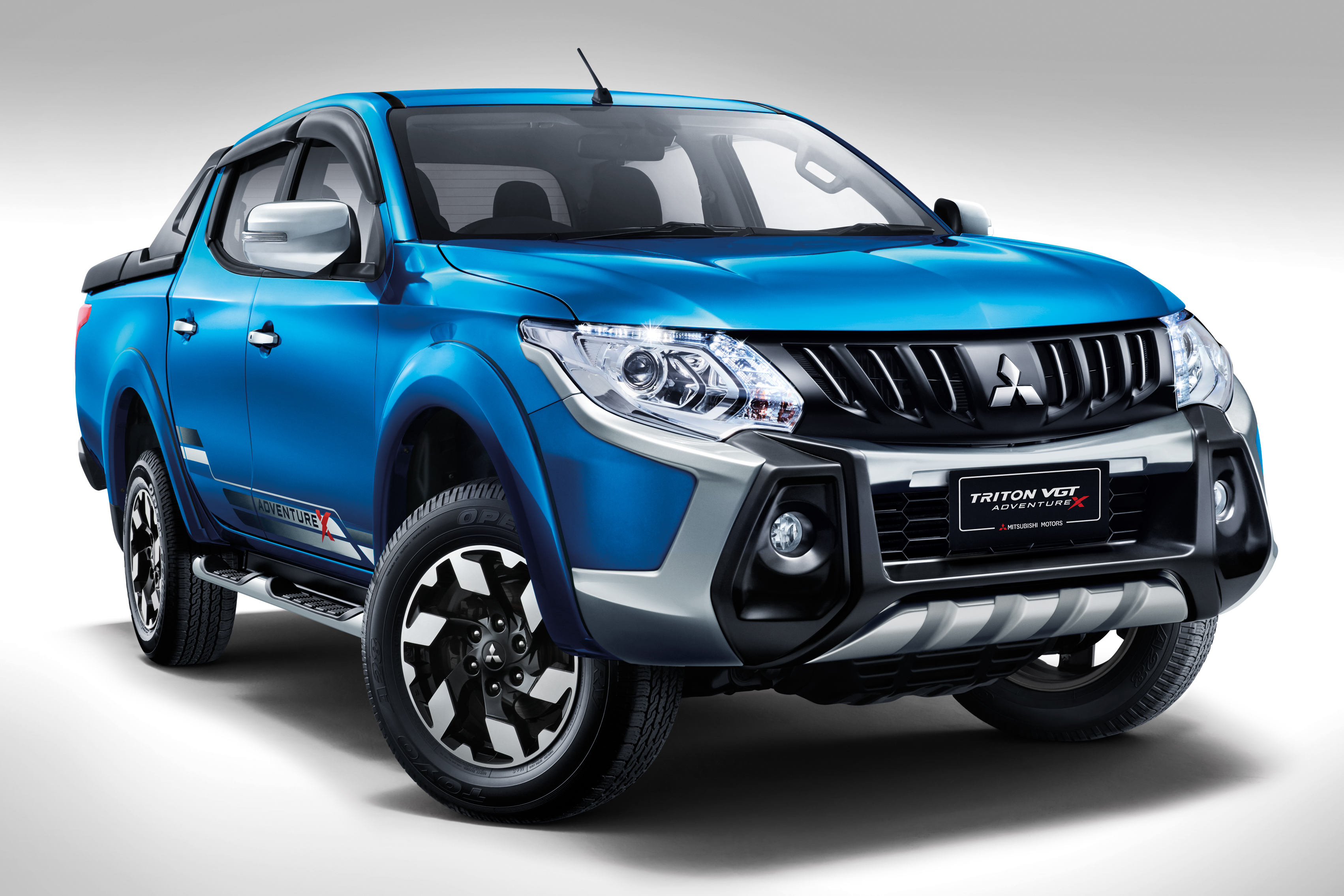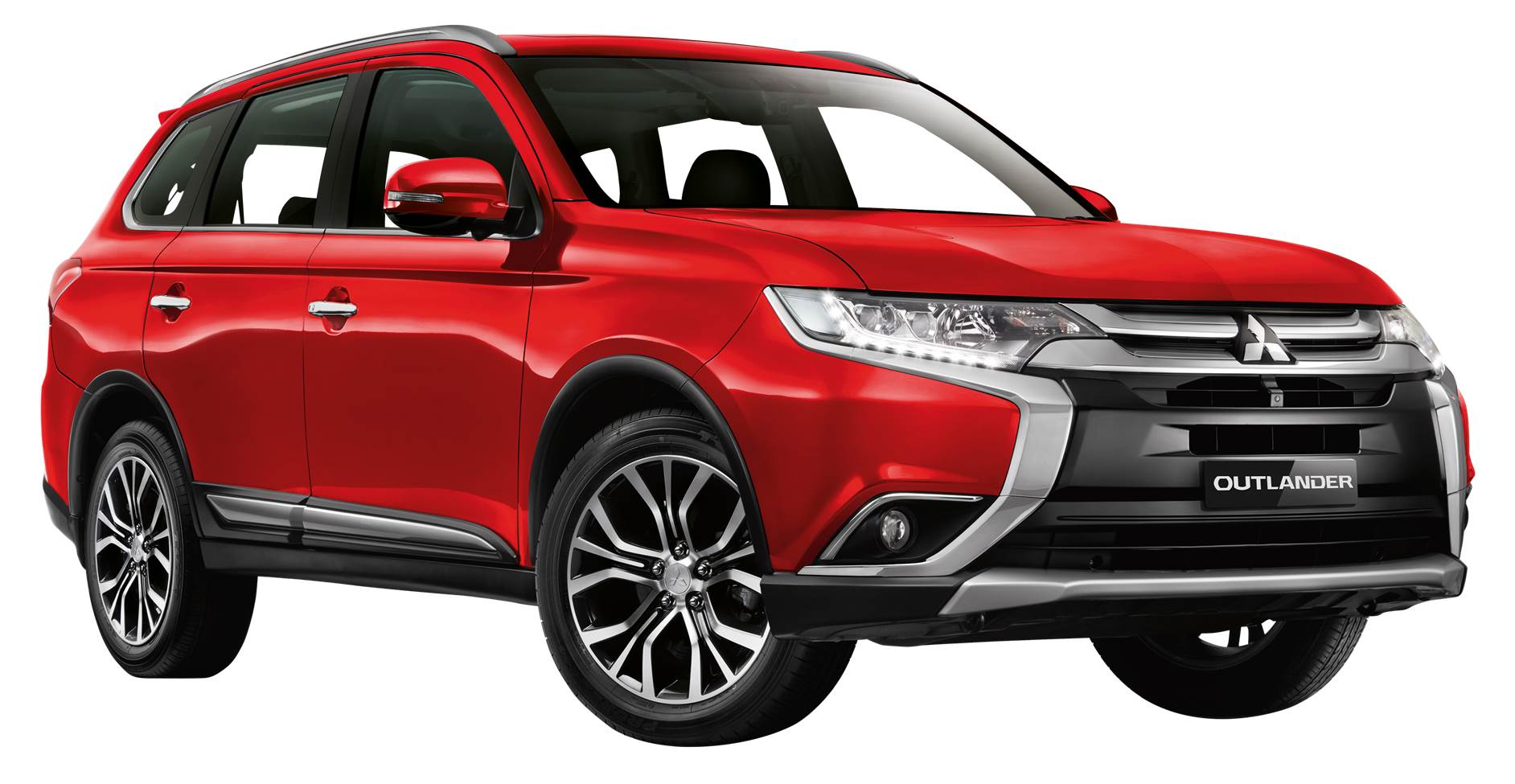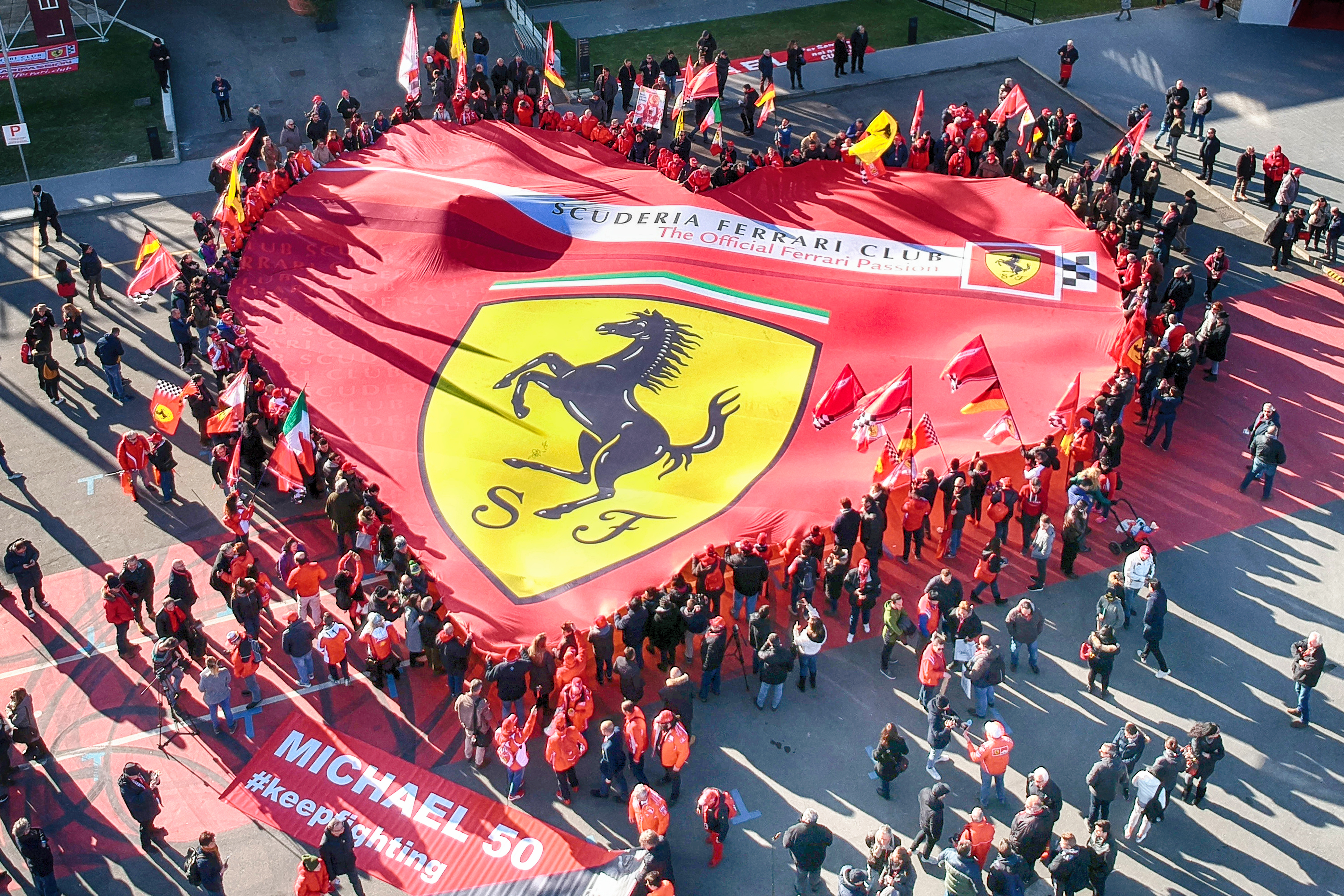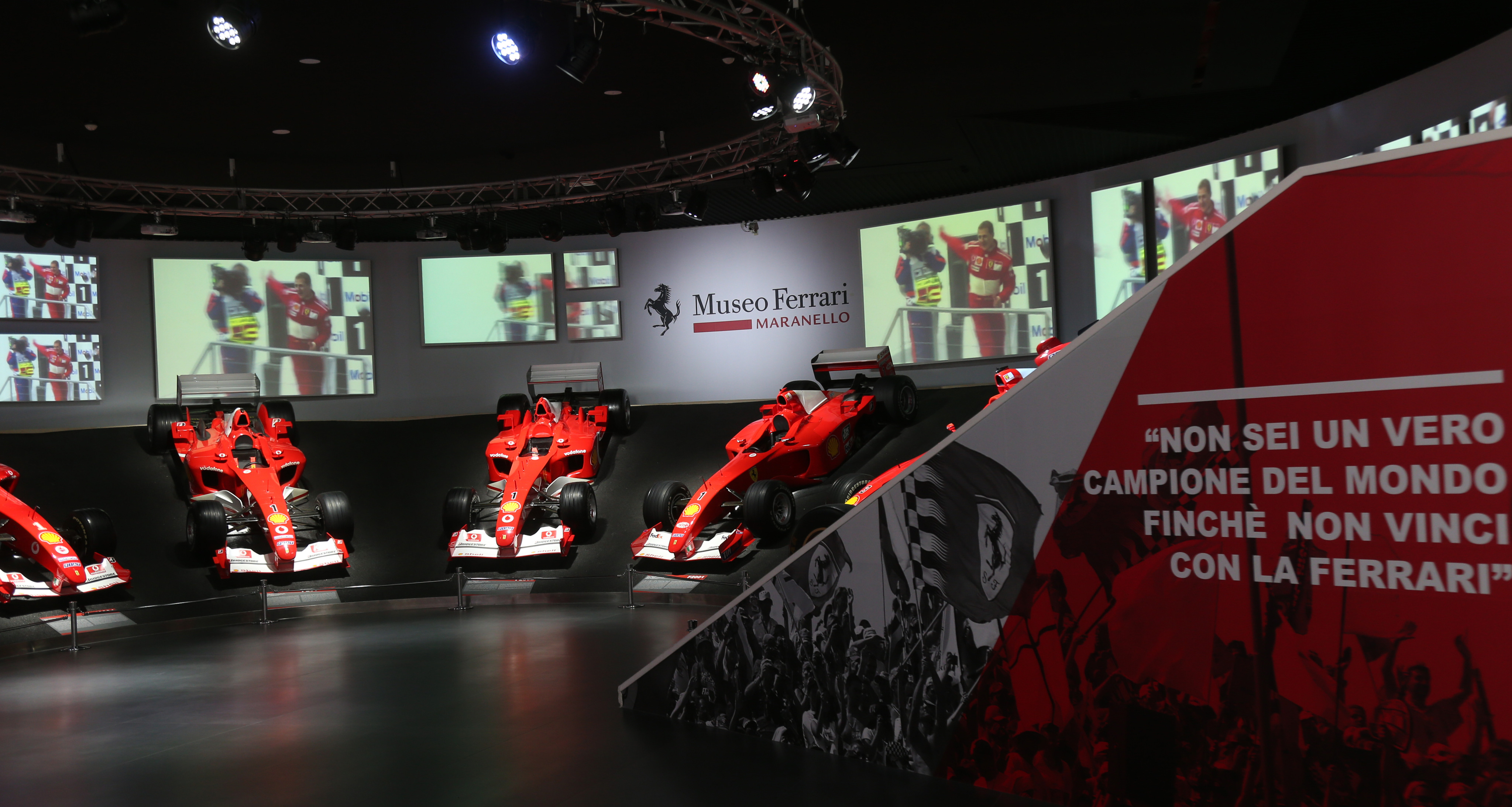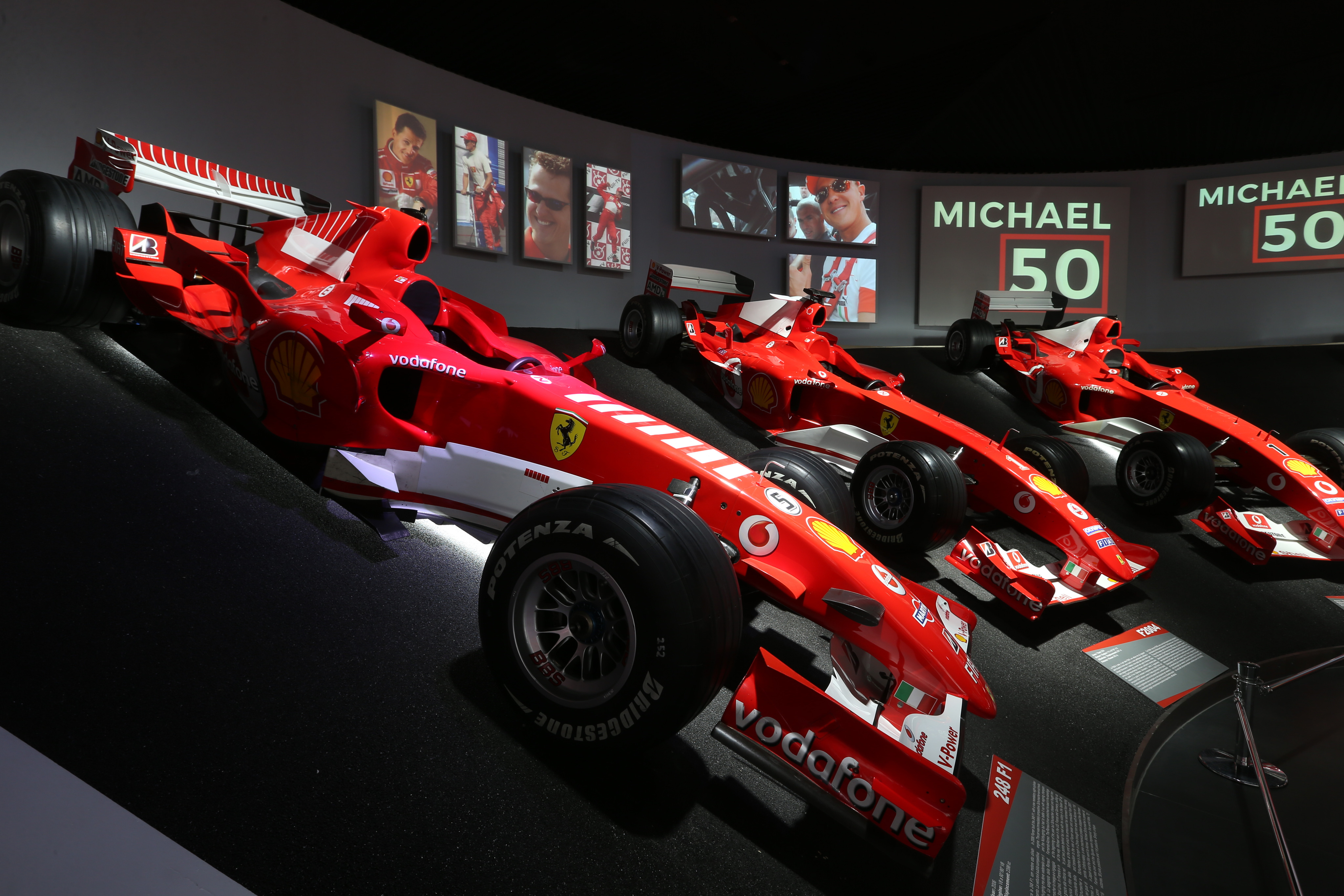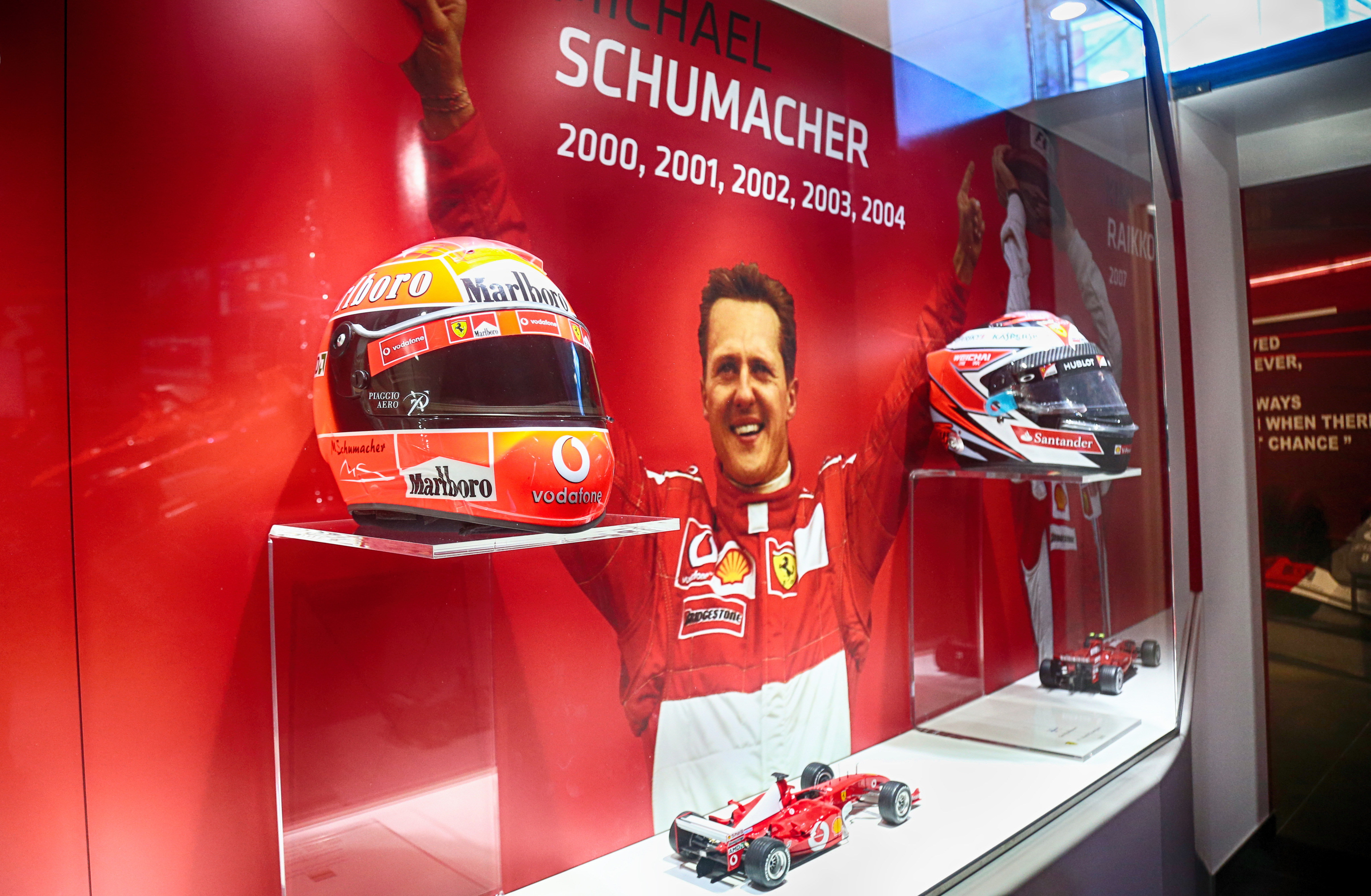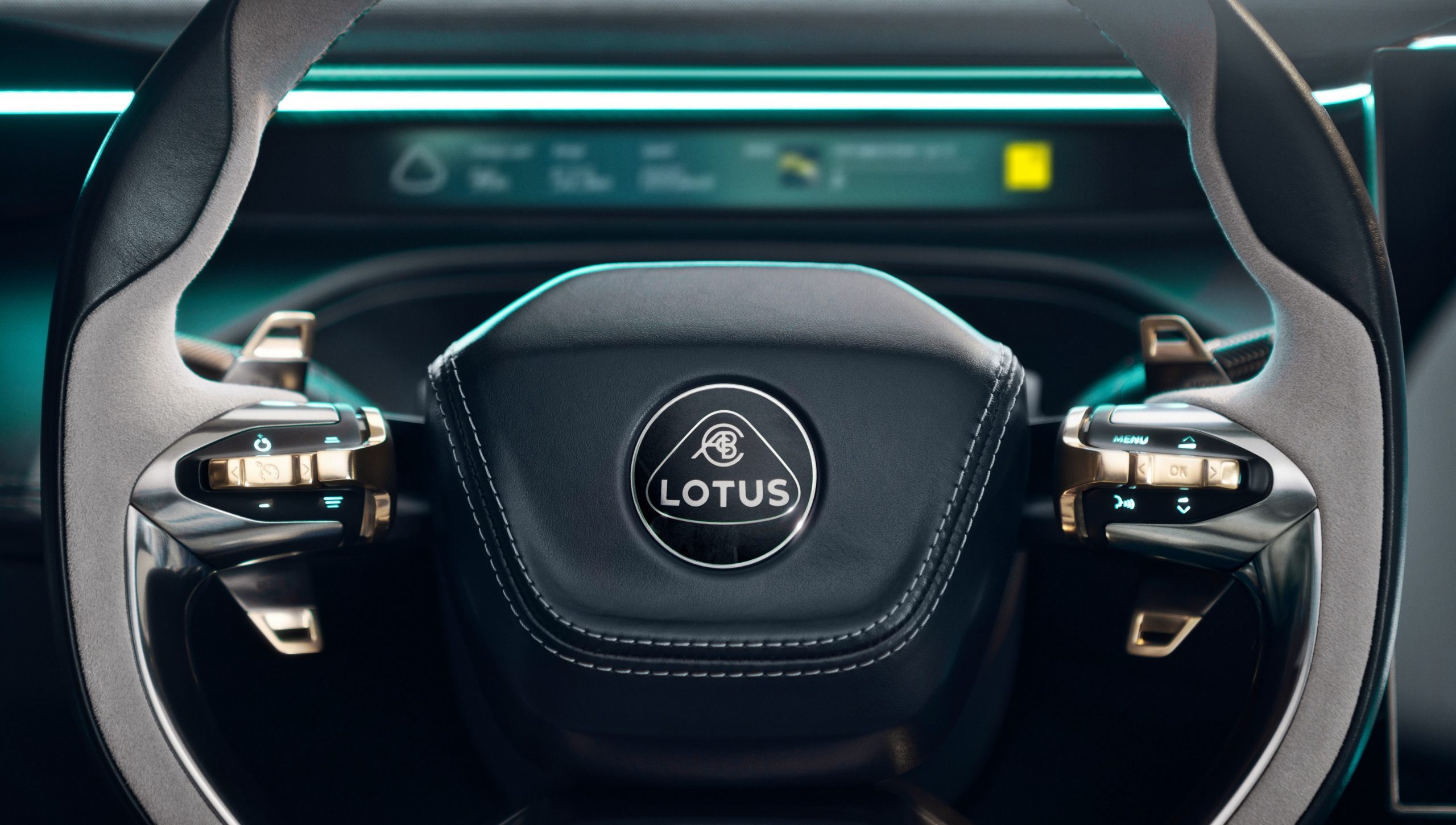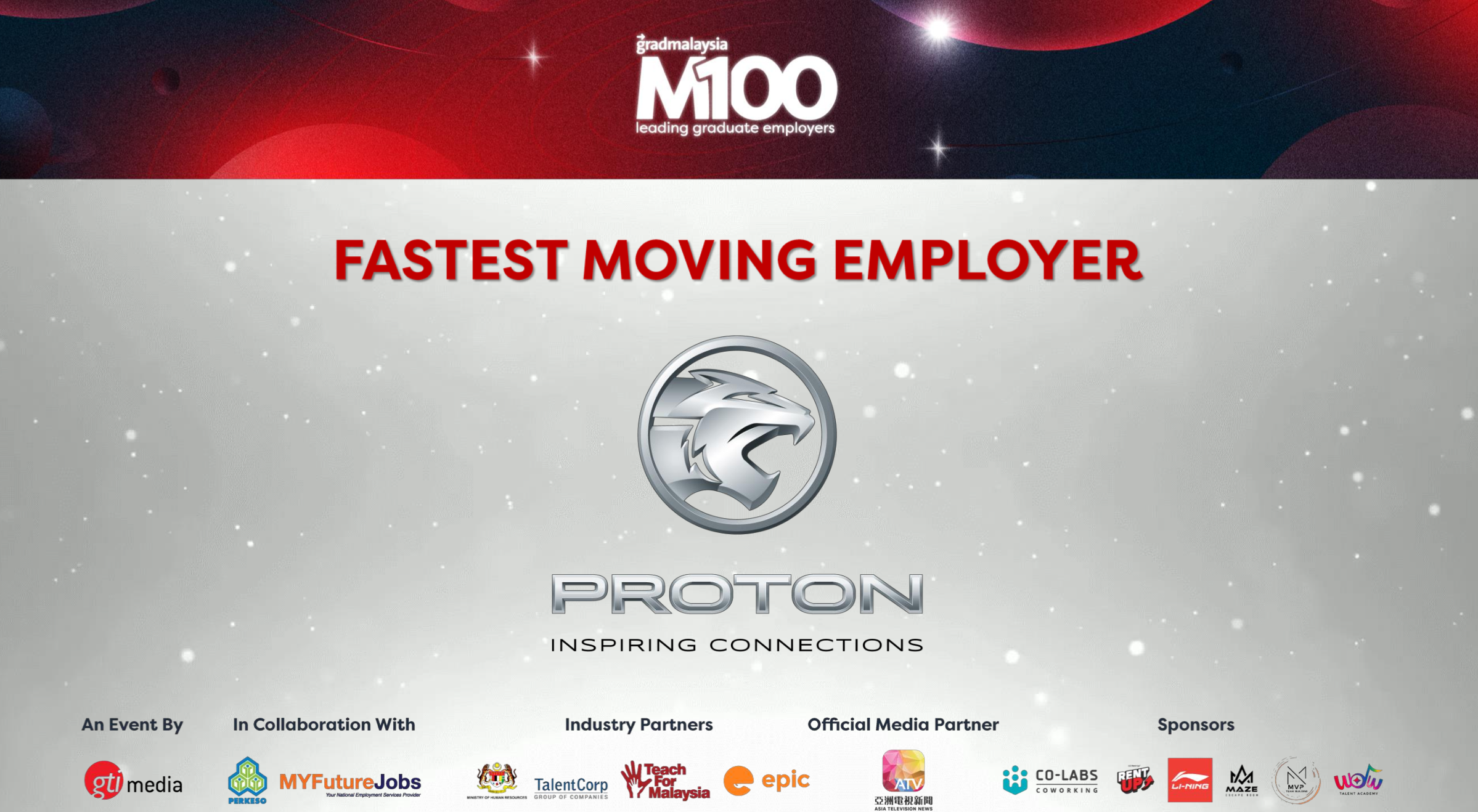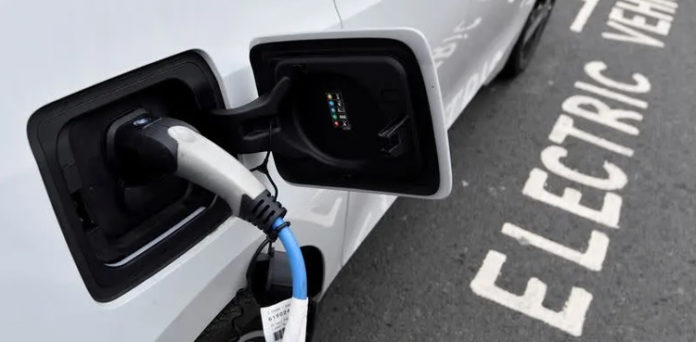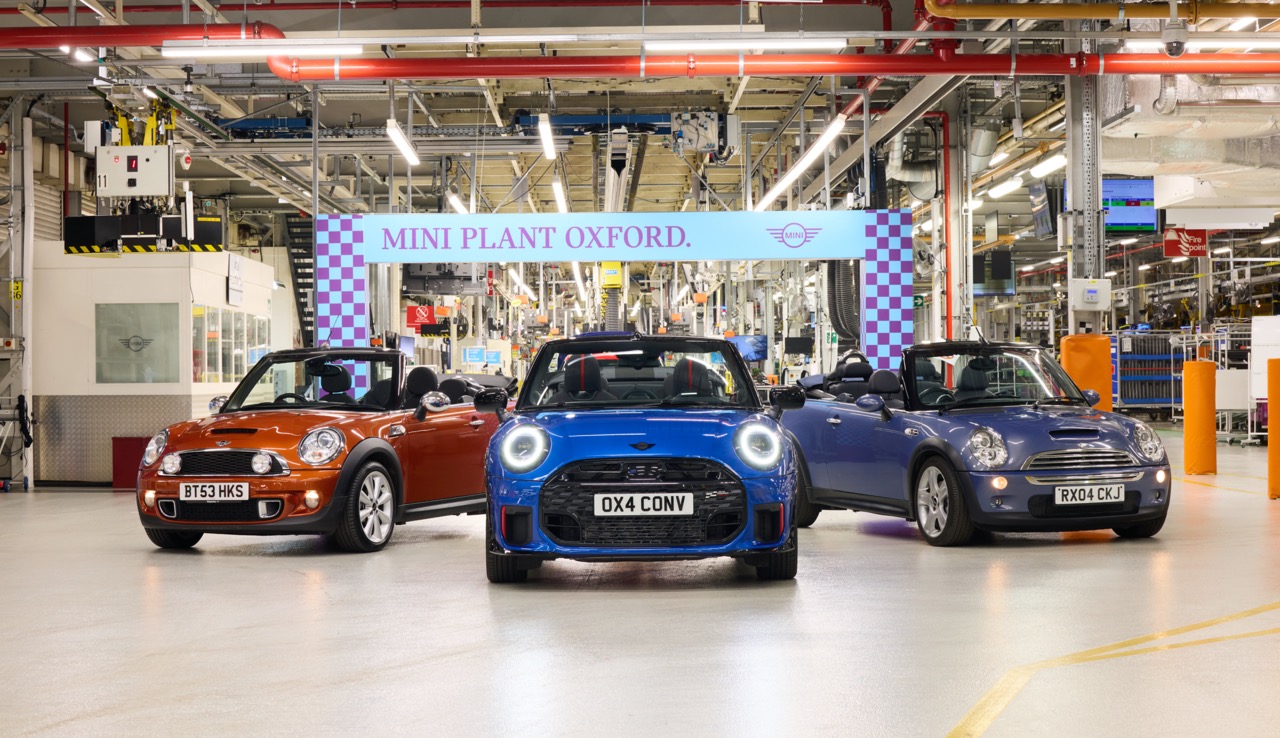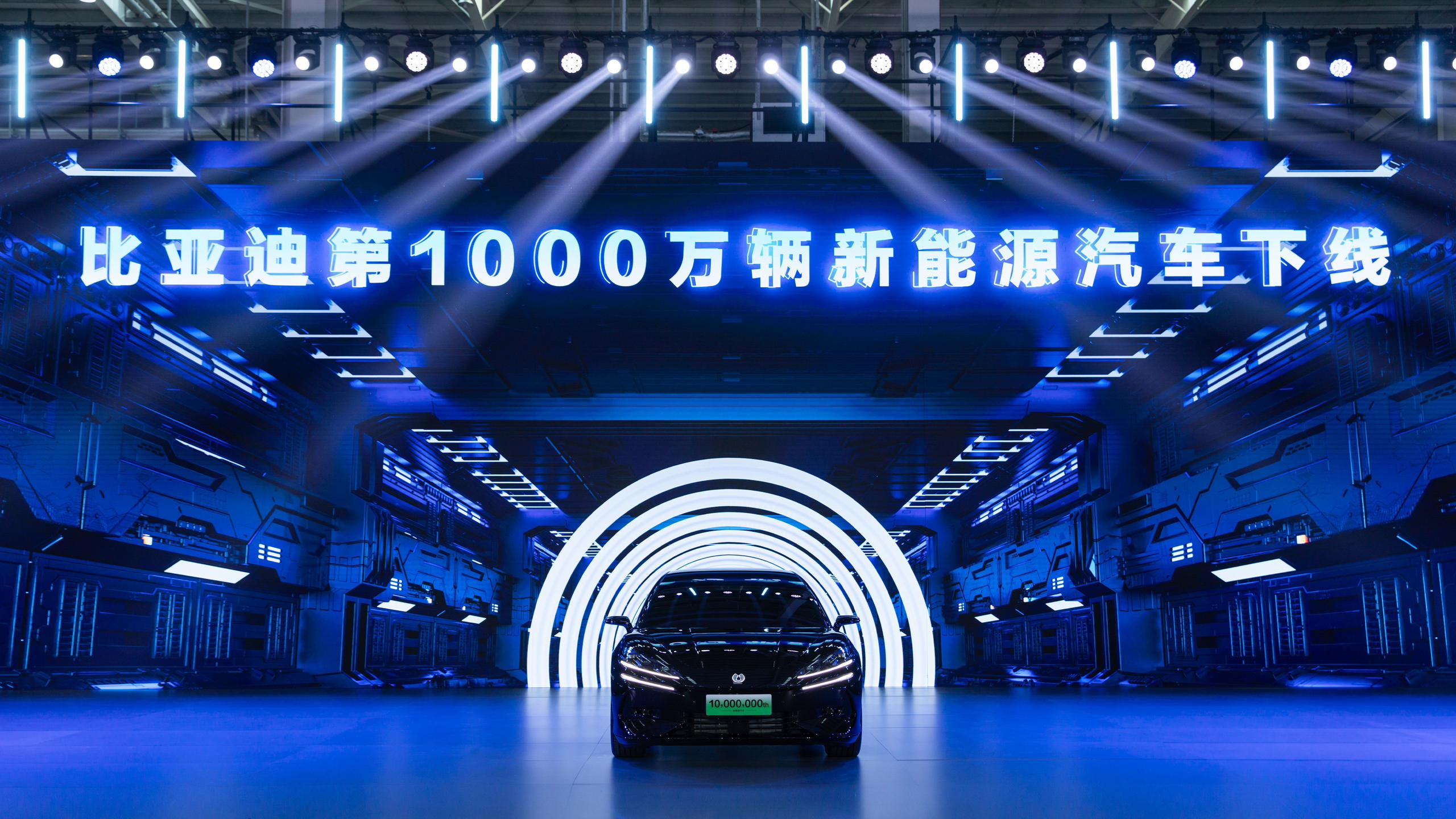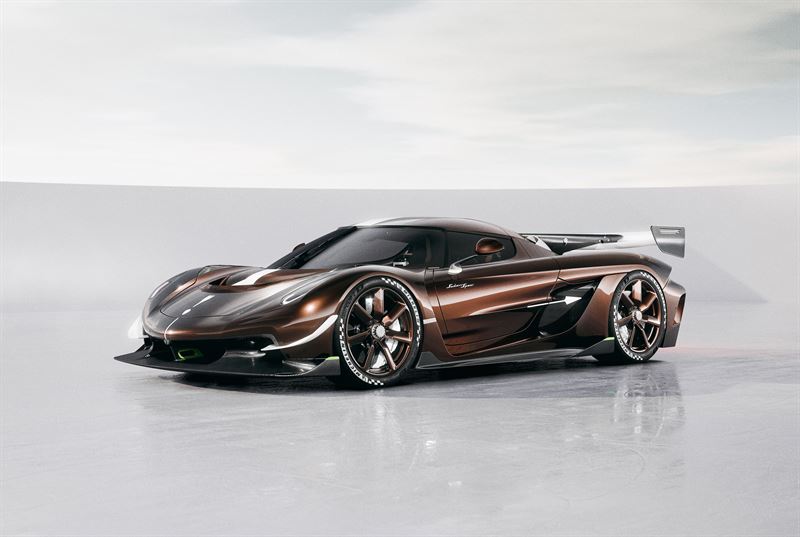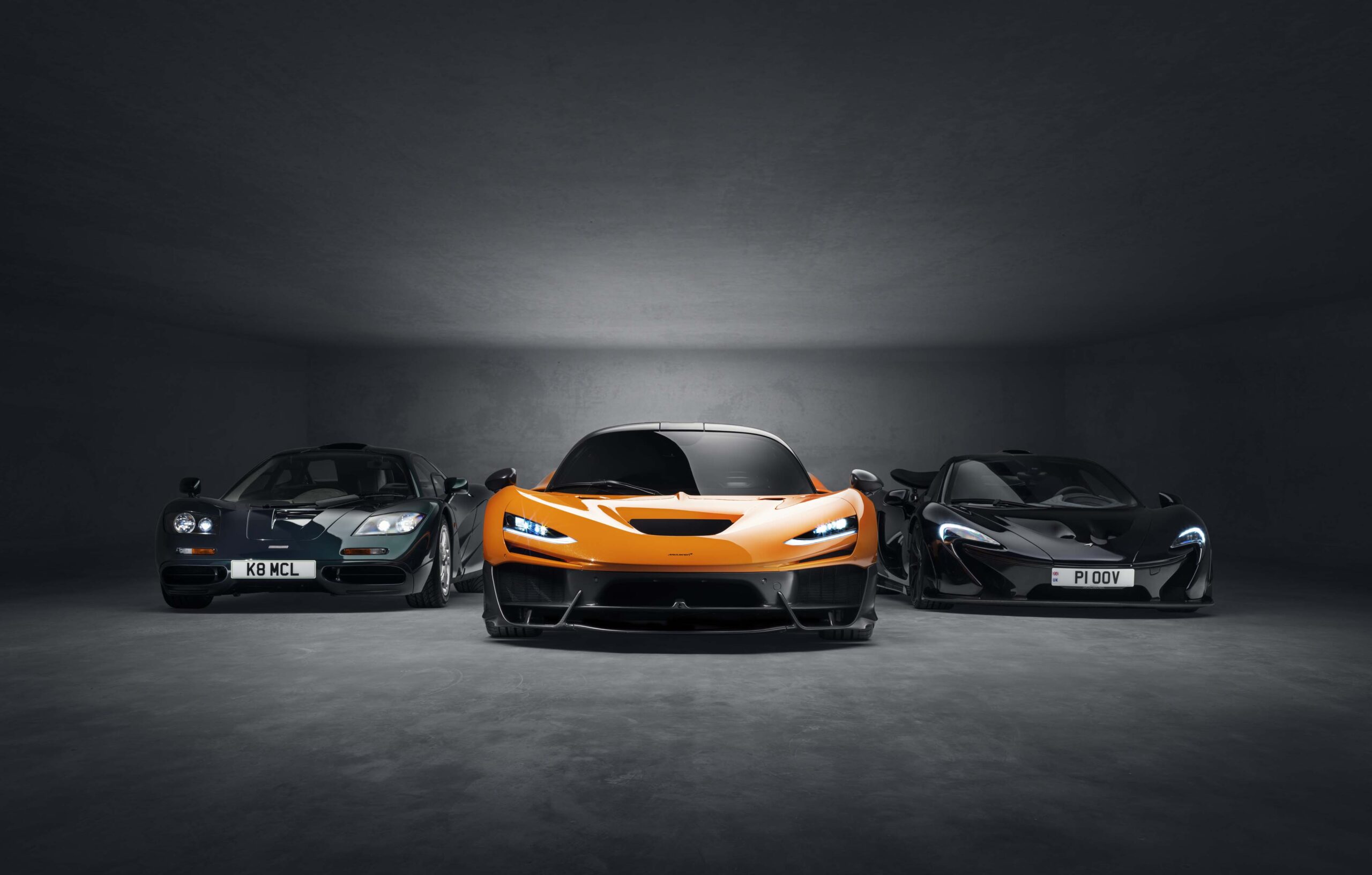2018 was the fifth consecutive record year for Mercedes-Benz Malaysia (MBM). The distinctive three-pointed star shined brightly in 2018 with an extraordinary performance of 13,079 vehicles sold, translating into a 9% overall growth. Capturing a 2.4 per cent market share*, the achievement cements Mercedes-Benz as the undisputed luxury lifestyle brand in Malaysia and the global arena.
MBM President and CEO, Dr Claus Weidner (below, left) said: “2018 was another successful year in the 15 year-long extraordinary journey for Mercedes-Benz Malaysia and the Mercedes-Benz brand. Our efforts to invigorate the brand experience for our increasingly diverse fans have been fruitful and we are happy to retain our position as the number one luxury lifestyle brand. Our great combination of Best Products, Best Service and Best Customer Experience continues to drive the brand’s success and we assure our customers and fans that this will continue to be our focus.”
He added, “Offering a seamless customer experience to our valued customers is a core value that we uphold and we believe this is important to ensure sustainability of the business. The mantra has always been about ‘Putting the customer at the centre of our activities’. ”
Commenting on the 2018 performance, Vice President of Sales and Marketing at MBM, Mark Raine (above, left) said, “We are extremely proud of our history-making performance for 2018. We delivered 13,079 Mercedes-Benz Cars to customers, further cementing our position as the leading premium brand in Malaysia. Our fresh-faced product portfolio with the locally assembled Mercedes-AMG C 43 and GLC 43, and all-new Mercedes-Benz A-Class has succeeded in keeping our fans excited about the brand. Furthermore, we gave the market a taste of the future with the EQ Concept this year. We intend to keep the momentum going with more exciting events and products in 2019.”
In 2018, MBM’s performance was spearheaded by the locally produced limousines, which recorded 7,910 units sold. Following closely were the Mercedes-Benz SUVs with 2,613 units sold, particularly by the locally produced Mercedes-Benz GLC 200 and GLC 250. The German marque expects continued positive demand for this segment. The Mercedes-Benz compact cars recorded a total of 1,875 units sold, while the Mercedes-Benz Dream Cars, recorded a total of 662 units sold, a 77% growth for the three-pointed star’s brand shapers.
The 20 vehicle launches spread throughout 2018 sustained the healthy momentum of demand for Mercedes-Benz vehicles. The key launches included the locally-assembled Mercedes-AMG C 43 and GLC 43, Mercedes-AMG E 53 Sedan and Mercedes-AMG E 53 Coupé, its New Dream Cars Collection, the New Mercedes-Benz S-Class Family, and the all-new Mercedes-Benz A-Class and new generation C-Class.
Additionally, MBM showcased the brand’s innovative edge with the EQ Concept premiere in Kuala Lumpur – a first in Southeast Asia. The milestone has positioned Mercedes-Benz as a reinventer of the automotive industry with the EQ brand, pioneering the direction and setting the stage for future mobility.
Going hand-in-hand with its Best Products, MBM spearheaded engaging activities to match a diverse fan base aligned to its overall Best Customer Experience commitment. MBM engaged with fans through events like Urban Hunting x ULTRA Singapore 2018, Mercedes-Benz Fashion Week in Kuala Lumpur, the MercedesTrophy and introduction of the AMG Owners Club Malaysia (AOCM) which are aimed at elevating the AMG experience with exclusive access to all things AMG for owners.
Complementing the seamless ownership experience, Mercedes-Benz Services Malaysia (MBSM) recorded a steady growth in line with the three-pointed star’s progress. For the year, MBSM financed four out of every 10 Mercedes-Benz vehicles sold and has a solid servicing portfolio of MYR 2.7 billion** MBSM’s commitment to innovative peace-of-mind financing and insurance solutions was further embodied with the introduction of new products like AgilityPlus and Lease2Go.
MBM’s emphasis on upholding Best Customer Experience at every touchpoint translated into the highest Customer Satisfaction Index (CSI) After-sales score in history. The achievement has demonstrated the brand’s excellence in managing the high volume of Mercedes-Benz vehicles by maintaining high levels of customer satisfaction.
The passion and expertise behind the Best Customer Experience brand promise was showcased once again in this year’s Mercedes-Benz SEA II Skills Competition. 2018 marked the competition’s 10th anniversary and first year opening its doors to the South East Asia II (SEAII) region. A total of 613 Customer Services Professionals and Advanced Modern Apprenticeship finalists competed for the title of best technician, service advisor and process specialist within the Mercedes-Benz network.
The celebrated technicians and customer services personnel make up the backbone of MBM’s 35 dedicated dealerships nationwide. In tandem with its growing fan base, MBM launched five new touchpoints last year including the NZ Wheels Klang Autohaus, Hap Seng Star Setia Alam Autohaus and Asbenz Stern Kuantan Autohaus among others. Trained with a view of keeping customers at the centre, every touch point is key in delivering the Best Products and Best Customer Service throughout the entire customer journey. To date, Mercedes-Benz has the largest premium dealer network in the country.
Recognising the dedication, passion and hard work of its dealer partners, MBM held the inaugural Dealer of the Year awards in March 2018. The award is poised to be an annual event aimed at rewarding dealerships for operational excellence and commitment to delivering the Best Customer Experience. Another exciting offering introduced in the network for 2018 was the Mercedes-Benz Certified pre-owned vehicle programme. The programme represents the highest quality in used cars from Mercedes-Benz worldwide, previously known as Proven Exclusivity.
Mercedes-Benz as a brand has invested over MYR 1 billion in the Malaysian market since 2003 and MBM’s production plant in Pekan, Pahang demonstrates its long-term position and consistent commitment to the Malaysian economy. In FY2018, the production plant produced 9,854 vehicles, including the newest addition being the Mercedes-Benz S 450 L and the Mercedes-AMG C 43 4MATIC Facelift.
MBM’s long-term commitment is also demonstrated through the Mercedes-Benz Malaysia Training Academy built to develop the skills of Malaysia’s youth and create meaningful job opportunities in the automotive industry. 2018 saw an additional 26 apprentices graduated bringing the total to 853 globally certified local apprentices who have passed through its doors since the establishment of the training programme.
On its outlook for the year ahead, Dr Weidner said, “2019 will be another exciting year for Mercedes-Benz with refreshing innovations and new benchmarks to elevate the customer experience. We are excited to share these updates in due time.” Earlier this week, Daimler AG announced that on a global level Mercedes-Benz sold approximately 2.3 million cars worldwide in 2018, increasing its unit sales by 0.9 per cent, making 2018 the most successful year in terms of sales in the company’s history.
The new sales record in the car division of Daimler AG was driven in particular by the success of Mercedes-Benz in the Asia-Pacific region. Asia-Pacific was identified as the region with the strongest growth in 2018, delivering 943,473 (+7.8%) Mercedes-Benz cars to customers in 2018. Mercedes-Benz Malaysia was one of the few markets in the Asia Pacific region to have delivered more passenger cars than ever before in a single year.
*As of YTD November 2018
**The numbers for 2018 are unaudited and subject to change.



